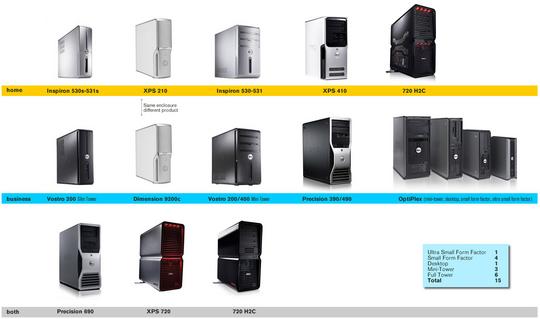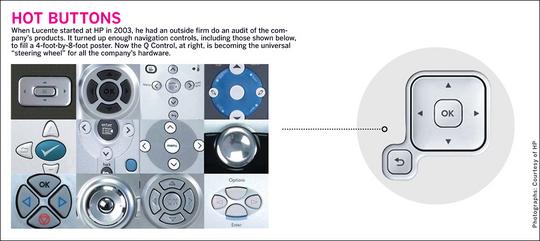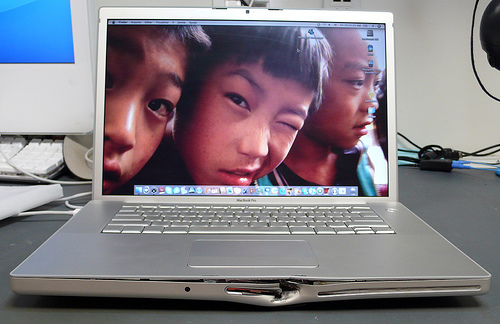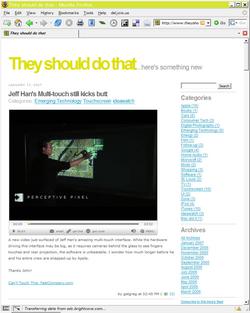All Ideas
I’m a pretty heavy iTunes user. And with my music collection, the “browser” is the quickest way for me to browse and navigate to the music I’m looking for. But the browser doesn’t always use space efficiently, and it doesn’t display album artwork. By comparison, the iPod and iPhone provide rich navigation in a single column and display album art in list views. So I made the video above to show how iTunes could benefit from a similar interface. I think even light iTunes users could benefit from this because it makes browsing iTunes much more like browsing the iPod. I hope you enjoy it, I recommend watching it at full screen or in HD.
iTunes Browser Concept
According to a recent NPD study found that Macs accounted for over 90% of computers sold in retail channels for over $1000. PC manufacturers really need to learn to segment the market better. This research underscores that there are customers with high willingness-to-pay (WTP) looking for a premium product. Even Microsoft's own "Laptop Hunters" ads make this point. In the video above, "Lauren and Sue" are looking to buy a notebook for under $1700 and they find exactly what they want for under $1000. Which is great for Lauren and Sue, but should also make PC manufacturers wonder if they couldn't have charged more for that same product
Notebook Pricing and Segmentation
I made the claim above during a recent conversation with a friend about the possibility of a future Apple tablet computer. That was a bit of an overstatement. But what I really mean, is the way keyboards are used today is dumb and needs to change. For instance, when I type on my iPhone I don’t always need to type the whole word, it does a decent job of auto-completing. Also, I can mash the letter’s wildly and it will figure out what I meant to type with amazing accuracy. So why is it that with a full-blown computer, and a huge keyboard I have to type E-V-E-R-Y single letter of every word with almost no forgiveness for typos? It just makes no sense. Three ways that text entry can smarten up are text expansion, typo correction and auto completion. And these methods could also be applied to non-keyboard text input methods, like handwriting recognition.
“I am so done with keyboards, I think they’re dumb.”
The recent "Laptop Hunter" ad by Microsoft featuring "Giampaolo" inadvertently makes a great case for buying a notebook direct. Giampaolo is looking for a notebook with (in the following order) "portability, battery life" and "power." He chooses a HP HDX, which is a cool machine, but it just isn't a great fit given what he was looking for. At 7.3lbs and 16" display, the HP HDX isn't that portable. It does have ample power with a 2.4GHz processor, 4GB RAM, 512MB graphics card, and fast 500GB HD. But given those specs the included 6-cell battery probably won't last that long on a charge. In the end, he ended up with a notebook that really only met 1 out of his 3 criteria.
Assuming Giampaolo really wanted an HP, had he looked on HPdirect.com, he would have done much better. For instance, the HP dv6t is about 1lbs lighter than the HDX and can be customized with a 12 cell battery and almost the same performance specs as the HDX (just a slightly different 512MB graphics card). That configuration runs about $1,300, still way under his budget of $1500. Also the EliteBook 6930p (KS085UT) for $1,429 might be the best fit of all. The EliteBook is much more portable at only about 5 lbs and a 14" screen (with higher resolution than the 16" HDX). It's also sports a 2.4GHz processor, 4GB RAM, a respectable 256MB graphics card, and 7200RPM 160GB HD. Overall, it strikes an excellent balance between portability and performance.
Over the years I've helped a lot of people buy computers, and usually buying direct is the best way to go. But golly, buying direct is not without it's own perils and frustrations. And it's hard to resist the instant gratification of shopping at big box stores.
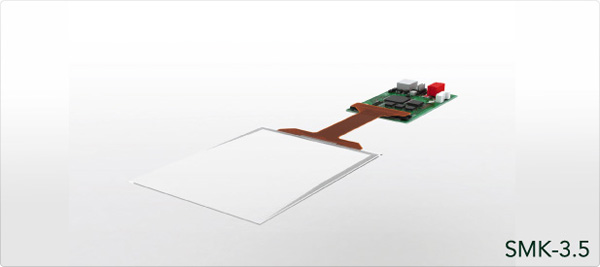
Long time readers know my interest in multi-touch technology, so I find these
2.5” and 3.5” resistive multi-touch from Stantum screens irresistible. Stantum is a French company, and parent company of JazzMutant which makes the Lemur, a programmable multi-touch
mixer used by musicians like Thom Yorke. Stantum's new cell-phone sized multi-touch screens use
resistive touch detection, but are much more precise and responsive than current resistive touchscreens. The screens can detect many simultaneous finger touches, finger pressure, and even accurately respond to tools like paintbrushes. Because the screens use resistive touch technology they should be less expensive to produce than capactivie touch screens and do not require a glass front which can be cracked or broken. The only downside I see to Stantus multi-touch screens is the controller card,
which is is pretty large at about 2" x 1.25". I'm not sure if the entire card is required to run the screen, but hopefully the necessary internals can be shrinked to single chip, because I don’t think your
iPhone or G1 has room for that whole card.
Stantum via Engadget with a videos!
Resistive Multi-Touch Screens from Stantum
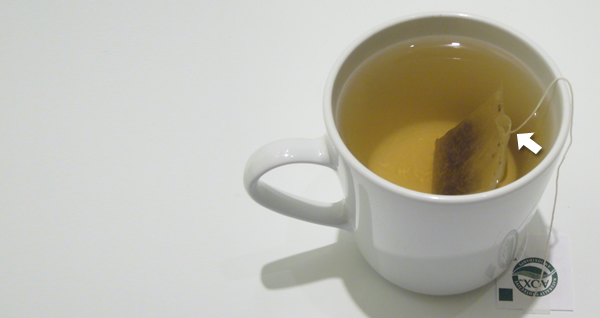
You see that little gap in the top of the tea bag, right by the string? At first I thought it was a manufacturing error, like the glue machine missed a spot. But after getting an whole box of Lipton tea with the identical gap I started to think it wasn't an accidental. Finally I realized the little gap isn't a defect, it's a design improvement. You see a normal teabag can actually trap air inside, and you end up with an air bubble in your teabag instead of water filtering through. That little gap in the top of the Lipton tea bag allows air to escape so more water can pass through the leaves. Pretty clever. This is my first box of Lipton tea in ages, so I have no clue how long their bags have been like this.
Lipton Improves the Tea Bag
When I first read about the new Microsoft ads featuring Bill Gates and Jerry Seinfeld, I was really skeptical. The match-up seemed strange; Bill Gates has pretty much stepped down from Microsoft and a Mac was always perched atop Jerry's desk in "Seinfeld." But after watching the first ad several times, I think it’s incredibly successful (and hilarious). Unfortunately, I seem to have the minority opinion (more on that later).
Microsoft rocks an ad about nothing
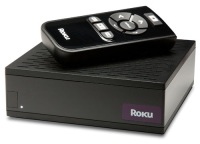
Netflix and Roku recently announced a little $99 box that connect to your TV and enables Netflix subscriber to stream videos right to their TV. Best of all, Netflix is offering unlimited streaming along with any subscription plan over $8.99 per month. I have to say, I think Netflix and Roku really nailed this one. The price-point is perfect, I think many Netflix subscribers won't think twice about buying one. Also, even if Netflix's streaming inventory is a bit small right now, it's only going to get bigger, plus streaming is FREE. The big surprise for me was that the Netflix Player doesn't offer the core feature that Roku pioneered: streaming your iTunes music to your stereo. I won't be at all surprised if future versions of the Netflix player allow you to browse and play your iTunes library on your TV and audio setup. Which will further pit the Netflix player against the Apple TV. For more on this read on...
Netflix streaming to your TV
I have to admit that while I love that video Malcolm Gladwell discussing the origins of the endless varieties of products in our supermarket shelves, I'm extremely uneasy about the overall thesis: i.e. that lots of product options are a good thing and make us happy. Maybe in the supermarket product variations really are a good thing. I personally have never bought Prego or Ragu, and the brands of pasta sauces I prefer don't come in dozens of varieties. To me the bigger question is at what point do product variations become product spam? Read on for more on this...
The Perfect Pasta Sauces versus Product Spam
Spint lost 1 million customers in the first quarter of 2008, while other major carriers grew. I've been a Sprint customer over 10+ years and several of my friends also have Sprint, and I have to say this doesn't really surprise me. For me the problem with Sprint comes down to one thing: lousy phones. Sprint consistently has the lamest selection of handsets of any cell carrier out there, and I think it's finally catching up with them (thanks, in no small part, to the popularity of the iPhone).
Sprint loses 1M customers
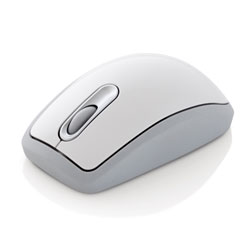
I'm on a perpetual quest for the perfect computer mouse. I find something wrong with almost every mouse I use: wireless mice - too heavy, Microsoft mice - comfy but kinda plain looking, Logitech mice - the high pitched click sound grates on me (I WISH I were kidding), Apple mice - pretty, but not that comfy and hard to clean, gaming mice - expensive and ugly... I could go on. The one brand of mice I always like are Wacom mice. They look great, have all the right features, and they're super comfortable. The problem is they only work on a Wacom drawing tablet. Which is why Wacom should make regular USB (and Bluetooth) mice with high sensitivity tracking. Wacom mice could be really popular with style conscious customers and anyone looking for something a little nice than the standard mouse. In fact just writing this has me thinking if it would be possible to cobble one together with an existing Wacom mouse and a USB mouse.
Wacom should make regular Mice
I'm sort of hooked on TED Talks, which can be easily downloaded via iTunes. This video of Malcolm Gladwell had me grinning from ear to ear. In it Gladwell talks about the career of Howard Moskowitz, the man who is directly responsible for the endless varieties of products on our supermarket shelves, particularly Pasta Sauce. It sounds obscure but this video touches on an amazing number of aspects of product development; aspirational buying, the fact the customers can't tell you what they want, products don't exist on a hierarchy, and my favorite, "the platonic dish".
Pasta Sauce and Product Development
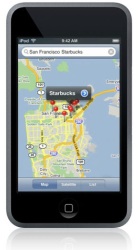
Google Maps on the iPod touch is great but with only Wi-Fi for internet access, it's often inaccessible when you need it most: in the car. I'm really hoping someone uses the new iPhone SDK to create a Maps application that works offline by locally saving maps of the entire US. Even iPhone users could find this useful as it would probably run much faster than Google Maps over the EDGE network.
iPod Touch needs offline Maps
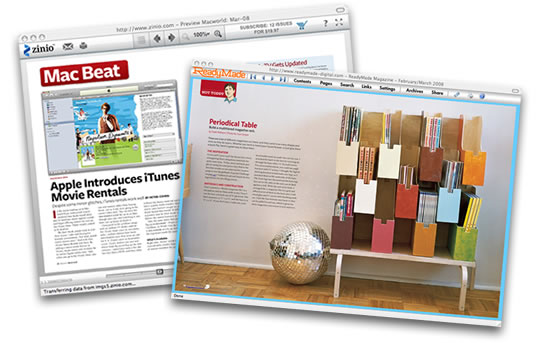
Ok, you're probably thinking, "Zini-what and Texteri-who?" Zinio and Texterity are both companies that convert print editions of popular magazines into digital replicas that can be read online. The digital edtion looks just like the original magazine, ads and all, but boasts some very handy features like searchable text, web-links, and a simplified table of contents. You can check out sample magazines by Texterity and Zinio for free. Both have some impressive titles and offer way more selection than is available for the Kindle. As I wrote before, I think magazines could be a killer app for the Kindle, but they need more titles and a way to deliver full-color editions which can be read from your PC. Purchasing either Zinio or Texterity would help accomplish both those objectives. Of course, Amazon already has it's own Amazon Online Reader which delivers faithful reproductions of books, so the actual software and methods may be less attractive then the magazine titles they would gain in an acquisition. Also, both Texterity and Zinio have created online readers optimized for the iPhone, which could prove to be a tough rival to the Kindle. By purchasing Zinio or Texterity, Amazon could control their competition better or even profit from it.
Amazon should buy Zinio or Texterity
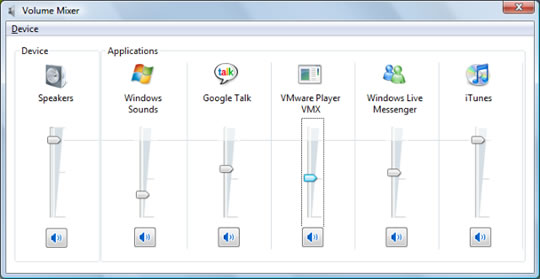
Wow. Windows Vista's volume mixer allows you to control the volume of individual applications (including Windows Sounds). This could be a great solution for finally silencing websites that play music and other annoying sounds. I really haven't been keeping up with Vista, but this is one feature that really makes me want it. There's an application for Windows XP called IndieVolume ($24.95), I'm not sure if there's anything like this for OS X.
Windows Vista Volume Mixer - Nice...
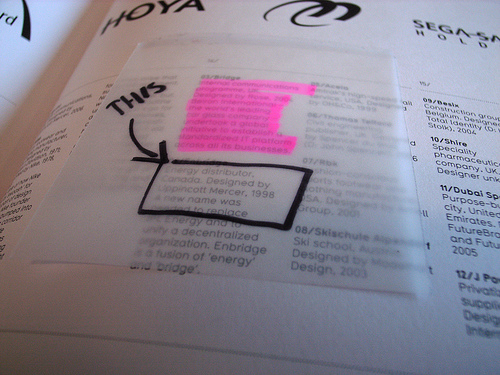
Reader Paul sent this in, and I totally love the idea of transparent Post-it Notes. I'm not sure if it's just a concept product or something we actually may see one day soon. Either way, I'd totally use them. 3M should jump on this if they haven't already.
Transparent Post-It Notes
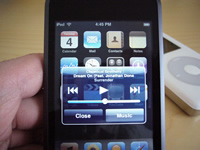
Through a rather odd turn of events, I'm now the proud owner of a 32GB iPod Touch. Looks like I'll no longer be using my trusty 20GB iPod 4G (sigh). Anyways, I've been using it for several days now and it's great. I actually wrote a full review, but decided it was too long and way too boring. So I've boiled it down to some highlights.
Requisite iPod Touch Entry

In the past I've written that I thought the iPod should have a "Trash Can" or "On-the-go Delete" feature. But through the magic of music synchronization and Smart Playlist you can pretty much create this functionality yourself.
Check out my new instructable "Automatically remove unwanted songs from your iPod." You actually use your iPod to mark which songs should be removed, so you can do it on-the-go. And don't worry this won't delete songs from iTunes, just from your iPod.
Special thanks to Andy Budd for turning me on to Smart Playlists, and this very clever commenter for giving me the idea.
iPod Delete Workaround
Apple is scheduled to release the official iPhone/iPod Touch SDK at the end of the month soon, which means we should see the first "official" iPhone/iPod Touch applications shortly thereafter. Here are some apps, I'm can't wait to see:
- TI-8X Graphing calculator
- iPhone as Modem
- Gesture Commands (also here)
- Voice Commands ("Call Steve", "Next Track", "Volume Down", etc..)
- A2DP Support
- Pandora player
- Some games (sudoku, tetris, etc.)
- Hulu Player
Keep reading for more on the Graphic Calculator idea.
iPhone Apps I'd Love to See
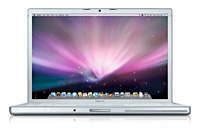
MacBook Pros were just released sporting faster Penryn processors and the Multi-touch trackpad. Also, the base configuration starts with a 256MB video card (up from 128), while the faster models have 512MB. Oddly, the remote is now a $19 add-on (it used to be free). MacBook Pros are still sporting the same design as PowerBooks from 2003, and there's still no high-resolution 15" display option. I can't help but see these MBPs as just the appetizer before the all-new MacBook Pro feast that should be served up with the new Intel Chipset Montevina (or Centrino 2, or whatever).
Updated MacBook Pros Finally Arrive
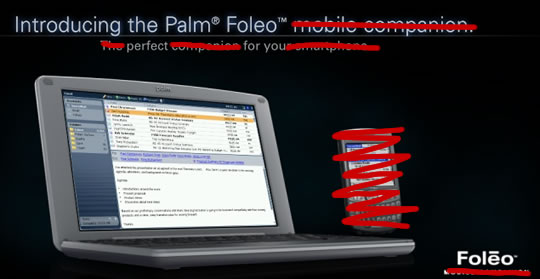
This recent article on CNET comparing the failed Palm Foleo to similar, and arguably successful, sub-notebooks has me thinking that the problem wasn't with the Foleo itself but how Palm described the product. At its core the Palm Foleo was a lightweight (2.5 lbs) Linux based notebook with Wi-Fi, Bluetooth, a 10" screen and full size keyboard. It was to be bundled with a solid web browser, e-mail application, and basic office applications. In reality, the Foleo is not that different from the EEE PC. But from the onset the Foleo was described as a "mobile companion" for your smartphone, not a standalone device. By contrast, the EEE PC, and other sub-notebooks, have been marketed as nothing less than a small, simple, cheap, easy-to-use PC. The Foleo was met with skepticism and criticism, while EEE PC enjoyed overwhelmingly positive reactions.
If you want to destroy a product's perception there's no better word to use than "companion." To many consumers "companion" means overpriced, limited compatibility, limited-use, and unnecessary. Much of what Palm did seemed to emphasize that it was not a standalone device: in photographs, the Foleo was almost always pictured with a Treo by it's side; even in in this video with the CEO of Palm, Ed Colligan, the first thing he said was that it's a mobile companion. Colligan goes on to make some very compelling points, but I think he lost most people after the companion part, and, by the way, it only works with Palm smartphones.
Palm Foleo - when bad PR attacks
This new study about Mac users pretty much confirms what most of us already knew from watching Best in Show:
Still this new study by Mindset Media hits a little too close to home. Here some of the trends among Mac users:
- More likely to use laptops. Check (my last 3 computer have all been notebooks).
- Buy organic food. Check
- Pay to download music. Check.
- Have bought 5 new pairs of sneakers in the last year. I'm at 3 and counting...
- Drive a station wagon. Check.
- Drive a hybrid. Maybe one day...
- Use teeth whitening products. Nope
- Liberal. Check
- Frequent Starbucks. Nope, their tea selection is lame, but (much to my embarrassment) I do get their Chai Tea Latte from time to time.
Man, am I really that much of a cliche? My next computer might have to be a Dell Latitude E just to shake things up.
Study confirms Mac users like Starbucks, cosmetic dentistry
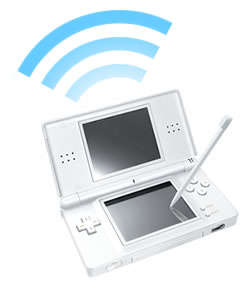
For Christmas this year, my amazing girlfriend gave me a Nintendo DS Lite. It's my first portable video game in ages and I (we both actually) love it. But the one thing I'm not so wild about are game cartridges. Initially the cartridges were quaint, but now they just seem inefficient and annoying. Nintendo should really offer DS games downloads and a way to load a bunch of games on a single cartridge. Actually something like that already exists, sort of...
DS Game Downloads
RED - Recycled Energy Development, has proven methods for converting the heat that normally goes out factory smokestacks into useful energy. Here's how it works:
We basically use the heat to boil water and make steam, we use the steam to drive a turbine, ... and the turbine drives an electric generator.
Source

The energy can power the factory itself or be fed into the energy grid to power homes. RED estimates that if all the waste heat from US factories and plants were captured it could make up 20% of US energy use, which is roughly the same as 120 coal-fired power plants. That could mean that the US wouldn't need any new coal fired plants, and some existing plants could be taken offline, creating a huge reduction in CO2 emissions as well as other pollutants. If factories can reduce their energy costs, or even make a profit by selling their energy back into the grid, overall manufacturing costs could go down dramatically. That could mean more manufacturing jobs could stay in the US. This is one of those ideas that's so good it's almost frustrating. I strongly recommend downloading the Living On Earth interview with RED chairman, Thomas R. Casten. He discusses some of the challenges with electric congeneration efficiency in the U.S. One of my favorites Quotes in the interview:
CASTEN: I'm an environmentalist who tries to make my living as a capitalist. I want to have those rules be as cost effective and as environmentally effective as possible. My larger comment is that global warming is such a huge problem; it's hard to believe we're going to solve it if our only answer is that people must make sacrifices. We're offering an approach that profitably reduces greenhouse gases and that's much easier to persuade people to do - to go improve their own economic lot and do good. We just need to be a little smarter about how we're doing these things.
Source
RED - Recycled Energy Development via Living On Earth (Download the entire Podcast or just the RED segment)
Recently car companies have taken to advertising cars they don't sell. Like this one for the BMW Hydrogen 7,
or this one for the Honda FCX Clarity, and lastly this one for the Chevy Volt.
When I first saw these ads I was outraged. None of these products can be purchased, and they could be nothing more than empty promises. However, after reflecting on these ads, I concluded that they could actually improve things for fuel efficient vehicles. Read on for why.
Ads for Cars you Can't Buy
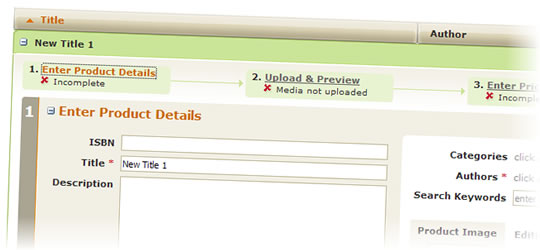
In my last entry about the Amazon Kindle, I wrote that Amazon should make it really easy for publishers to make their content available on the Kindle. Amazon's Digital Text Platform does exactly that, it enables publishers to upload their content to the Kindle Store. Did I mention it was REALLY easy? You basically just fill out the details of the publication, upload the file (supported formats include HTML, PDF, even Word Documents), and set the price. I'd love to see small magazines, professional journals, universities and even museums take advantage of this; it could be a great way to reach a larger audience and have a permanent archive of content.
Publishing to the Kindle Store is Dead Easy
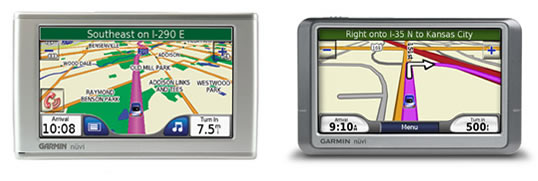
I recently mentioned product spam in digital cameras, but check out all these GPS navigators from Garmin. It wasn't difficult for me to find two that are incredibly redundant: the nuvi 260W and nuvi 660. Both retail for about $399 (see their Amazon product pages here and here), both have a 4.3" touchscreen, both can say the names of streets and both have the same preloaded maps. However, the 660 has Bluetooth, a longer lasting battery, an FM transmitter, an MP3 player and a few other features the 260W lacks. So given that they're both the same price why would anyone logically choose the 260W over the 660? The really crazy thing is the 260W is newer. Why would Garmin introduce a new product with fewer features than an older product at the same retail price. Ugg...my head hurts... By comparison, TomTom's product line is much more streamlined and user-friendly, also the listed prices are much closer to the actual street prices.
GPS Navigator Product Spam
Unless you were born in the late 90's don't waste your time with "My Word Coach" for the Nintendo DS. I've been playing the game for about a month now and I keep getting the word "Gopher" over and over again. But this was really the icing on the cake.

I don't know about you, but I don't have occasion to use the word "gopher" in a sentence that often. (Except when I'm talking about how lousy "My Word Coach" is.) And I'm pretty sure I've never struggled to verbally express myself and had the word "gopher" come to the rescue. I also can't think of an instance when some people were talking about a gopher and felt embarrassed that I didn't know what they were talking about or nervous that someone might find out.
The word of the week is Gopher
In honor of PMA '08, I've prepared a Pogue inspired list of Digital Camera Imponderables.
- If an iPod can charge via USB why can't most digital cameras?
- What actually changes when you adjust the ISO setting on a digital camera?
- Why are memory cards included with digital cameras so pathetically small?
- Why is there so much digital camera product spam? It seems within any manufacturer's product line are a couple cameras that are almost the same price but one is significantly worse than the other, or one is way more expensive than the other but only offers trivial benefits.
- Why didn't Polaroid, a huge innovator in mainstream photography, become a major player in the digi-cam market?
Discuss...
Digital Camera Imponderables
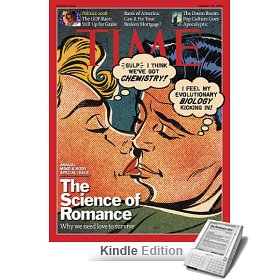
In my last entry about the Kindle I discussed how magazines could be the "killer-app" for Amazon's Kindle. The Kindle holds amazing promise for reducing the carbon footprint of publishing, but to do that the Kindle first needs to get really popular. Amazon still has some work ahead of them before the Kindle is a raging success. Read on for some simple ideas for how Amazon can use magazine content to make the Kindle a hit.
Kindle Magazine Strategy
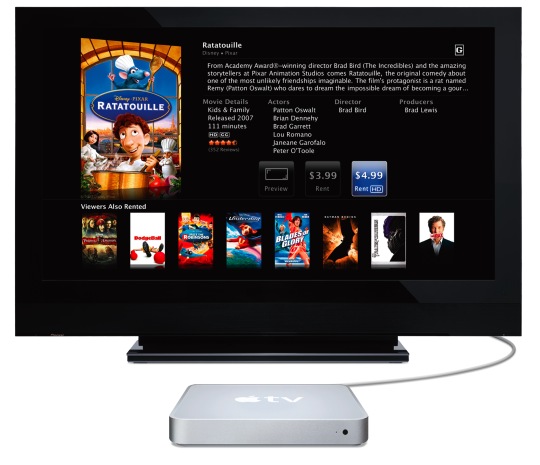
With all the buzz around the MacBook Air, I totally forgot that it's now possible to shop (and rent!) from iTunes using the Apple TV. Back when the Apple TV was first announced I was pretty disappointed and surprised that it couldn't shop on iTunes, but the new Apple TV software gives pretty much total access to the iTunes Store (movies, music, podcasts, etc). Now you no longer need a computer to shop on iTunes, and the new software download is for all Apple TVs. The Apple TV still doesn't offer iPod connectivity which seems really weird.
iTunes Shopping Now on Apple TV
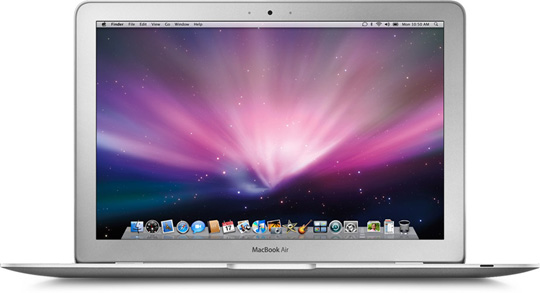
Apple's brand new ultra-portable notebook, the MacBook Air, was just announced at MacWorld. The Air, like the normal Macbook, sports a 13.3" screen and a full size keyboard, but at just 3 lbs it's 2 lbs lighter than the MacBook. Also, the trackpad supports several new multi-touch gestures, like the pinch-zoom gesture. Looks like multi-touch is slowly appearing in more and more Apple products. The Air seems like a great machine that will finally satisfy customers who have been eager for a Mac under 5 lbs (something which has been conspicuously absent since the MacBook). The Air lacks an internal optical drive, but there is a new external Apple SuperDrive for $99. Also, the battery is not removable, which is already drawing some criticism. With the Air, it looks like Apple will have to replace the battery for you (for $129). Hopefully, Apple Stores will even do the replacement.
Finally a MacBook under 5lbs: The MacBook Air
Well MacWorld is over, and Pro notebooks are still sporting pretty much the same design of PowerBooks from 2003. I'm pretty bummed, I really thought the stars had finally aligned for new MacBook Pros to be unveiled at MacWorld this year. On the upside, the new MacBook Air gives a lot of clues about new MacBook Pros. I fully expect new MBPs to take a lot of design cues from the Air, be lighter and sleeker, and support more multi-touch gestures on the trackpad. On the downside, it looks like totally new MacBook Pros are still a few months off, as the Montevina chipset isn't set to drop until mid 2008. Which sucks, because I really need a new notebook now. Looks like I'm stuck playing the waiting game...
Where are the New MacBook Pros?
I'm counting down the minutes to MacWorld '08. Here are a few predictions.
- Lots of news about how great Leopard is doing
- Lots of news about how great the iPhone is doing
- iPhone SDK released early
- 16GB iPhone
- iTunes movie rentals
- iTunes Wi-fi store for Apple TV
- New Apple TV that supports HD, probably with larger capacity
- Something about Blu-Ray
- Ultra-portable/tablet MacBook Pro
- MacBook Pro line updated with Penryn processors and new styling
Last Minute MacWorld '08 Predictions
For the last two MacWorlds I've been hoping Apple would unveil a new design for it's Pro notebooks. So far it hasn't happened, but this should finally be the year for the MacBook Pro line to be totally refreshed from the inside out: Intel's new mobile processor family, Penryn, is set to be released this month; also there are rumors of a new addition to the MacBook Pro line in the form of a ultra-portable notebook or a multi-touch tablet; and lastly, the appearance of Apple's Pro notebooks pretty much hasn't changed since 2003. Read on for what I'm hoping for in new MacBook Pros.
New MacBook Pro Design at Macworld '08?

Electronic readers hold incredible promise, particularly for the environment: replacing paper books with electronic downloads could reduce paper consumption and waste as well as energy used for manufacturing and transporting materials and finished products. But in order for the promise of electronic readers to be realized, they first have to become hugely popular. So far that hasn't happened yet. But Amazon's Kindle might be able to succeed where others have failed.
Amazon Kindle, Magazines Could be the Killer App
The display on my notebook, a 4+ year old Dell 600m, has crapped out. I haven't totally given up on it, but more than likely, I'll end up buying a new computer in the next month or so. But for now, I'm tethered to my desk and using a borrowed 17" CRT, which kinda sucks, because my desk was famous for looking cool. But what sucks even more is finding a new laptop. My little 600m is a surprisingly tough act to follow: it weighs 5.5 lbs, has a 14.1" SXGA+ (1400 x 1050) display and a video card with dedicated memory. And it's FOUR YEARS OLD! By comparison the 15.4" MacBook Pro has lower resolution despite the larger screen, and also weighs about 5.5 lbs. After four years, I want a laptop that isn't just faster, but lighter too. And so far I just can't find one...
My Laptop is Now a Desktop

Rumours are circulating that Apple will announce an ultra-portable notebook at January's MacWorld. There are also rumors that Apple is working on a (multi-touch) tablet computer. I can't help but think the ultra-portable and the tablet are actually the same product, just like the "true video iPod" and the "Apple cell phone" turned out to be the iPhone. Also, Dell will soon release the Latitude XT tablet with a multi-touch display. I won't be at all surprised if the specs of the Apple's ultra-portable/tablet and the Dell XT are almost identical.
Dell XT and the Rumored Apple Tablet
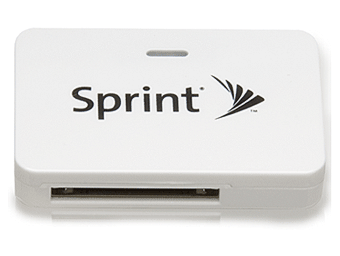
This is probably really old, but it's still cool. The Anycom Bluetooth Music Station Converter is an A2DP audio receiver with an iPod dock connector, so it can connect to any iPod speaker set or dock. With this little gadget you can easily stream audio from a computer with Bluetooth (like a Mac running Leopard) to a iPod speaker set (like the Bose SoundDock). And at just $50, it's a pretty good alternative to AirTunes if you already have a Bluetooth computer and iPod speaker dock. It's available from Sprint but it should work with any A2DP Bluetooth device.
Bluetooth A2DP Reciever with iPod Dock Connectivity
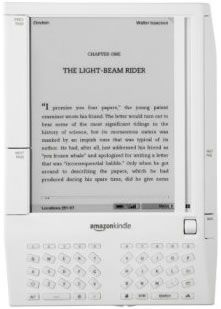
Amazon recently released the Kindle ($399), an electronic reader that can wirelessly download books without a computer. Once you buy a Kindle there are no service contracts or recurring fees and you can shop Amazon's selection of books, magazines, newspapers and blogs right from the Kindle. The Kindle has a 6" electronic ink display that sips power and offers a reading experience very similar to paper. The Kindle is definitely a breakthrough device and it's already being compared to the iPod. But if the Kindle is the iPod of reading, where's the iTunes of reading?
Amazon Kindle, an all-in-one wireless reader
I thought I knew a thing or two about multi-touch. I know that Jeff Han's multi-touch displays and Microsoft's Surface use cameras behind the screen to detect finger contact. I know that Microsoft hasn't (publicly) been that successful in scaling a multi-touch screen into a really thin (or practical) form factor. I know that Apple bought FingerWorks several years ago. I know that Apple has a ton of IP related to multi-touch. But one thing I didn't know is that Dell was going anywhere near the technology. Now out of the blue this video drops of Dell's new Latitude XT Tablet sporting 5 finger multi-touch. With all of Apple's multi-touch IP I was sure it would be first with a multi-touch tablet, but it looks like Dell might beat them. Unless of course the long rumored ultra-portable MacBook Pro is going to be a multi-touch tablet and beats Dell to the punch. Which now seems pretty likely.
Dell Multi-Touch Tablet Revealed
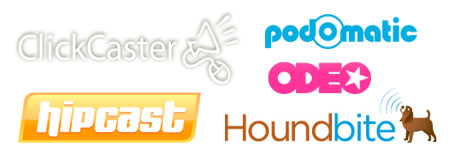
One of the top search terms that land people here at They Should Do That is "YouTube for Audio." It turns out that there are a handful of services out there that pretty much do exactly what I proposed in my original entry. I haven't actually used any of these, but they all seem to make creating a podcast and embedding audio into a webpage pretty easy.
PodOMatic
ClickCaster
hipcast
Houndbite
Odeo
YouTube for Audio, Reprise
Daring Fireball has a very eloquent entry on how Apple has no rival to push them to be better and give consumers more choice.
If Apple is BMW, who is the Audi pushing them to be more elegant, or the Acura or Lexus pushing them to be more reliable?
The sensibility and technical expertise that Apple brings to its product is simply unmatched in consumer technology. And while I'd love for a rival to emerge, I don't think any major tech company actually wants to play the same game as Apple. Although if one were to emerge, my money's on HP, I think Sam Lucente is doing amazing things.
Apple Needs an Equal Rival
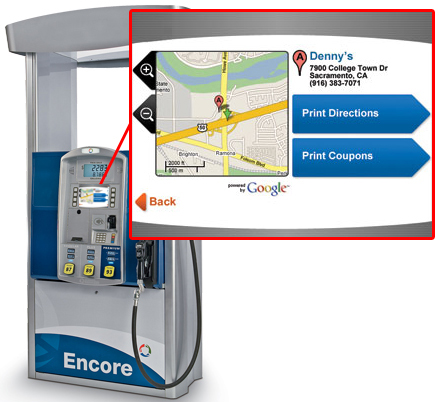
These new gas pumps with access to Google maps are pretty much the coolest thing I've seen in a while. I wonder if you can use Google Maps without buying gas.
Image from Engadget.com
Gas Pumps with Google Maps
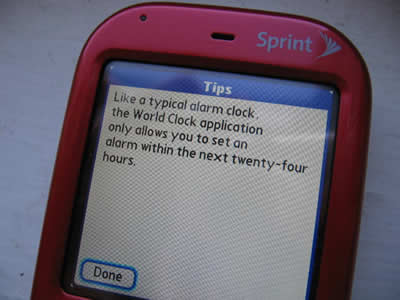
My girlfriend's new Palm Centro smartphone doesn't include one of the basic features we've come to expect on a cell phone: a daily alarm clock. I don't know how Palm missed this; by comparison the iPhone has a great alarm clock. The Centro's "World Clock" application has an alarm, but it will only go off once; you have to manually turn it on before each time you want to use it. To add insult to injury, Palm knew that this would cause confusion, so they included this handy tip:
Like a typical alarm clock, the World Clock application only allows you to set an alarm clock within the next twenty-four hours.
Ok, seriously, what "typical alarm clock" does that? And why should that behavior be replicated in an alarm clock software application? Instead of actually resolving this problem, they tried to just explain it away. Sure you can create a daily recurring event on your calendar, but that can get pretty cumbersome. And while there are alarm clock applications out there, having to use a third-party app for something as basic as an alarm clock almost discredits the product. I thought technology companies had finally figured out that what makes a product great is how well basic features are executed, and how functional the device is right out of the box.
The Palm Centro Should Include a Daily Alarm Clock
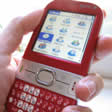
My girlfriend recently became the proud owner of an adorable red Palm Centro. Needless to say, I'm pretty jealous. The phone is super cute, amazingly responsive and user friendly. I think it's the best consumer smart phone out there after the iPhone, and it's for Sprint! Read on for a more observations and details...
The Palm Centro Comes Home
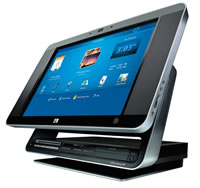
When I first came across the HP TouchSmart, I thought it was just a cool all-in-one with a touchscreen display. But what makes the TouchSmart really unique is that it uses cameras to detect finger touches, as described in this great NY Times article. The only other touchscreens (I know of) that use cameras are big ticket multi-touch systems like Microsoft's Surface, and Perceptive Pixel's huge interactive wall, which use cameras mounted behind the screen to "see" touches. The HP TouchSmart has two cameras on the outside of the screen in each of the upper corners. This allows the TouchSmart to use a conventional LCD screen instead of rear projection and maintain its slim profile. Since finding this out I've started to wonder if the HP TouchSmart may be able to detect multiple finger touches with some modification.
HP TouchSmart uses Cameras to detect touches

ShouldDoThis.com is the site I wish I had thought of. It allows anyone to submit a suggestion for anything, then the user community can vote on the suggestions. To submit an idea you need a user account, which takes about 5 seconds to create. From there, all you have to do is type in who the suggestion is for, and what the suggestion is. When you find an suggestion you like, you can click the "Should do this" button and it adds you to the list of supporters, you can also write an entry giving your two cents on the suggestion. You can easily search suggestions, and view all the suggestions for a particular entity, which actually gets it's own subdomain like http://google.shoulddothis.com/. The site is attractive, easy to use and the developers are incredibly responsive to user suggestions (go fig). If you like this website, I strongly recommend checking out Should Do This.
ShouldDoThis.com, the site I should have thought of...
The newest version of Apple's OS X, Leopard, finally brings A2DP support to the Mac. A2DP is a technology that allows audio to be wirelessly streamed from a device, like a computer or cell phone, to a set of speakers or your home stereo. One can only expect that A2DP support will soon be coming to the iPhone too. Apple was a pioneer of wireless music when it created AirTunes, a nifty feature of it's Airport Express Base Station that enabled iTunes music to be played over your wireless network. But now that Leopard supports A2DP, it seems very possible that Apple will create it's own Bluetooth Audio Gateway.
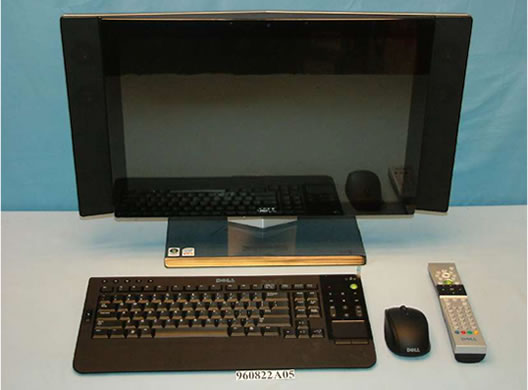
Looks like Dell is jumping on the all-in-one bandwagon with the XPS
One. The new system, just leaked by the FCC, features a 22" display, an
optional TV tuner and it looks like a wireless keyboard, wireless mouse and
remote are included standard. Also, it looks there's a little trackpad
right on the keyboard which is just perfect when is very handy when you're short
on space or using the keyboard from your lap.
[FCC
via
Gizmodo
via
PC
Joint]
Dell (finally) makes an All-in-One
After reading Gizmodo's great entry on "Product Spam" the first thing that came to mind was Dell's dizzying choice of desktop computers. Dell currently offers about 24 desktop PCs, with 15 different enclosures, across 2 customer segments and 6 product lines. This is a little wired considering that people are increasingly choosing notebooks to desktops. Also Dell has yet to jump on the all-in-one bandwagon, despite the fact that Apple, Sony, HP and now Gateway all have compelling all-in-one products. However, the good news is that, believe it or not, since mostly ditching the Dimensions line things have actually improved. But I think Dell can still do better.
The Case for Fewer Dell Cases
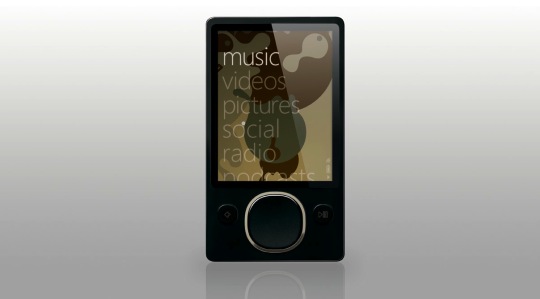
Microsoft has announced the updated version of the Zune. It's sleeker than before, and can sync with your computer wirelessly via WiFi. However, it still lacks the feature most commonly associated with Wi-Fi: web browsing. Microsoft should create a web browser for the Zune that rivals Safari on the iPhone and iPod touch, especially given than many people are underwhelmed with the iPod touch's capacity. The lack of a touchscreen might be an issue for the Zune, but the new Zune Pad (or "squircle") could work like a trackpad for navigating web sites.
New Zune announced, still no web browser
Great article in Fast Company about HP's first-ever VP of Design, Sam
Lucente. Lucente is consolidating and simplifying all of HPs design
efforts around a consistent design "attitude." He's also working to ensure
HP no longer duplicates it's design (and production) efforts. He's
proposed a single logo that can be used on any product as well as a single
navigation control to replace the dozens (or hundreds) currently in use.
Streamlining
HP [Fastcompany]
Design at HP gets an Upgrade
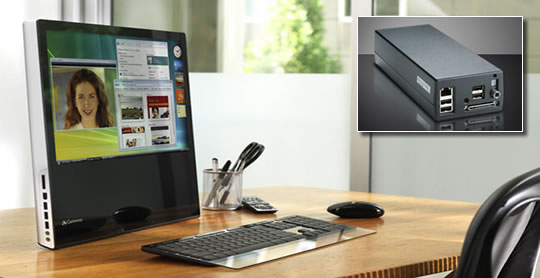
The Gateway One has a hot all-in-one design, but of all it's cool features, I'm
most impressed with the power brick. It includes 4 USB ports, an Ethernet
port, and even audio out, so you don't have to plug all the peripherals you
always use directly into the computer. Somehow Gateway took a normally
offensive hunk of hardware and actually made it useful. Other cool
features: a built-in TV-tuner on the top model, standard DVD burner, remote,
wireless keyboard and mouse standard, and an easily accessible bay for a second
hard drive. Kind-of-lame features: the display is only 19", processor
speeds top out at 2 GHz, the webcam isn't built-in.
Gateway
One (via
Gizmodo
Gateway One Innovates the Power Brick
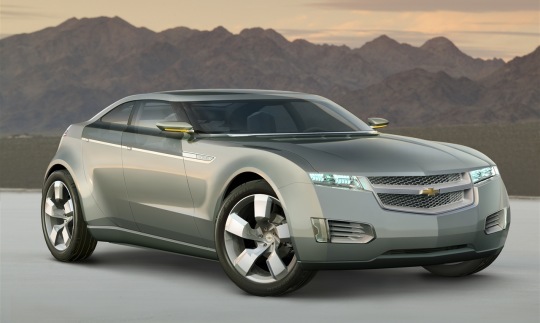
GM might actually bring back the electric car with the Chevy Volt. The Volt features a lithium battery that gives the car a 40 mile range, more than most people drive in a day. The car can then be plugged in and fully recharges in about 6 and a half hours. But, what really makes the car unique is the small on-board internal combustion engine which can recharge the battery as you drive. By utilizing this additional engine, driving range between fill-ups could be as much as 640 miles. Quite frankly, I'm really impressed with the Volt, I think GM, or perhaps I should say BobLutz , got it right. However, I am surprised by the aggressive appearance of the Volt. The big wheels and angular look makes it look like a modern muscle car, it actually looks a lot like the newCamero. In some ways that approach seems totally wrong, given how hybrids are distinguished by their cute and aerodynamic design. But that might be the point, after all people who are really into energy efficiency will probably buy the car no matter what it looks like (cough...honda insight). But for the people who were turned off by the somewhat toy-look appearance of many fuel efficient vehicles, the Volt might just what they're looking for. Again, I think GM got it right.
Chevy Volt: GM's new electric car

Looks like you'll be able to delete videos directly from the iPod touch to free up space, presumably so you can buy more music from the iTunes WiFi Music Store. But you still can't delete music, bummer...
Source: iPod Touch Manual
Delete Videos from (the) iPod Touch
While I love the idea of the iPod Touch, I'm a little wary of how the touchscreen will work in the real world. With my current iPod (20GB 4G) I can easily skip a track or adjust the volume while walking, I don't need to look at the screen and in a pinch I can even control it from inside my pocket or bag. However, with just a big touch screen, it may not be as easy to control the music on the iPod Touch. Even the iPhone has dedicated volume buttons on the side and the included headphones have a play/pause and next track button on the microphone. 37Signals wrote a great entry on customizable gestures on the iPhone. I mentioned a similar idea here, and I still think some kind of gestures to control music would be awesome. Here are my ideas for some music control gestures for the iPod Touch (or iPhone) that could work with the screen turned off or locked:
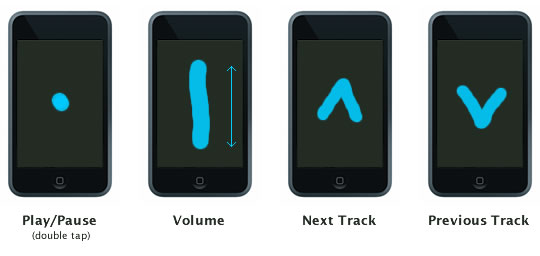
The iPod Touch has an accelerometer so it knows which way is up. So for the volume control, just drag a finger "up" to raise the volume, or drag your finger down to lower the volume, it would know which way is up no matter which way it was oriented. Using a double tap for play/pause might be a little tricky to distinguish between accidental taps, so that might not be realistic. Of course, the iPod Touch isn't even out yet, so this might turn out to be a total non-issue.
iPod Touch Gestures
Faster than you can say "they should do that," Steve Jobs to the rescue. Read the full response here.
$100 Store Credit for iPhone Early Adopters
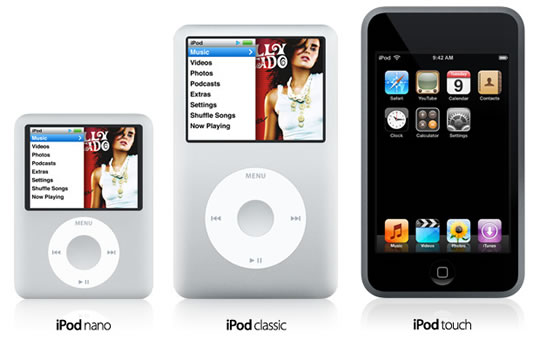
Apple announced lots of new iPods yesterday. I think this is the first time that Apple has released new iPod while their annual student promotion is still active. The biggest news is the iPod Touch, which is an iPod with a multi-touch screen and WIFI for web browsing. Like a lot of people, I'm pretty psyched about the iPod Touch but also wish it offered more than 16GB capacity. I'm also a bit baffled, by the iPod Classic; 80GB and 160GB iPod seems like overkill for most people. And while that much storage is probably great for movies, the little 2.5" screen is not. I fully expected that when Apple finally made a multi-touch iPod that it would be high capacity, and just be called "iPod." However, it's very likely that an iPod with a big multi-touch screen AND a hard drive would AND WIFI would have suffered from really awful battery performance. I can't wait to try out the iPod Touch when it shows up in stores, but I might just wait until they bump up the storage.
Lots of New iPods
Engadget recently posed the question "How would you change the Sony Reader?" To me the answer is obvious: cut the price in half. As I discovered with my Nokia N770, a low price tag can save a weak product. Of course, price isn't the only problem with the Sony Reader...
A Cheaper Reader
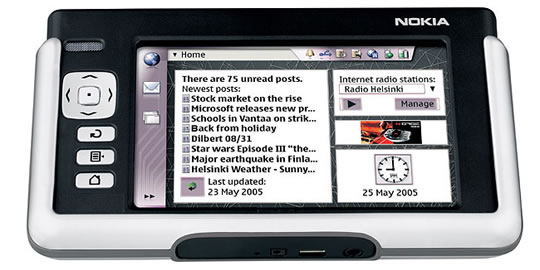
A couple weeks ago I bought a Nokia N770 from Woot for about $130. The N770 is a pocket size web browser that connects to the web via WIFI. It has a 4.1" touchscreen that delivers as surprisingly good surfing experience that really rivals a full PC. It handles lots of web browsing tasks just fine, including Gmail, Google Maps, Google Talk and so on. But easily the two best things about the N770 are it's price and the size. The N770 has plenty of shortcomings, it's Flash support is a few versions behind, so it can't play YouTube or Pandora. Also, the processor is pretty underpowered, which can cause some performance hiccups, and the virtual keyboard and handwriting recognition are really lousy. But for price and the convenience of a web browser I can stash in the glove compartment of my car and start up in less than a minute, it's problems become forgivable. Still, for a little more money, I'd much rather have the ASUS EEE PC or, of course, an iPhone...
You can still pick up an N770 for about $145 from Buy.com
My Nokia N770
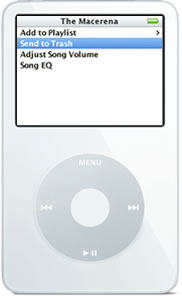
Sinve I've started listening to a lot of Podcasts on my iPod, I've wanted the iPod to have a Trash Can even more. I usually just listen to each podcast once, but I rarely remember to manually delete the ones I've already listened to. When I first wrote about this idea, I proposed that the ratings interface also be used to delete, but that has some problems. Unfortunately I can't think of a really good way to delete music from the iPod without adding another Now Playing slide-across screen. Maybe, with the next iPod revision we'll see some more advanced functionality.
On-the-Go Delete on the iPod
Engadget has an open letter to Palm with a ton of great ideas for how to restore Palm as a leader. Here are some of my favorite bits:
- You guys got handhelds right when everyone else, including Apple, was struggling to figure it out.
- Get thin - Three words: FIGURE IT OUT. If HTC, Apple, and Motorola can offer thin (and we mean friggin' thin) smartphones, you can too.
- YOU NEED TO MAKE THE PHONE LOOK NICE.... How have you failed to see that innovative and engaging design is necessary to win (or even compete) in the mass-market consumer cellphone world?
- we do, honestly, want you to make it through this thing. We want to love Palm like we loved it in the old days, and know somewhere, deep down, you've got some fight left in you.
Open Letter to Palm from Engadget
David Pogue's recent article, "Bluetooth and the End of Audio Wiring," really highlights the need for more computers, particularly notebooks, to support wireless music playback with Bluetooth. The article also great job explaining the confusing aspects of Bluetooth audio in very plain language and describes some very cool Bluetooth audio gadgets that can free your music from your cell phone or iPod.
Bluetooth and Audio

Every time I try to e-mail a document created in Apple's Pages using Gmail, it gets stuck in this this endless "Loading" loop. It seems that Gmail can't send Pages documents, and perhaps even other documents created in iWork. And I thought Google and Apple were all buddy-buddy lately. Anyways, they should really do something about this. So far the only work-around I've found is to change the extension before e-mailing it, and then restoring the extension when you download the file.
Attach Pages Documents in Gmail
I was watching this iPhone copy paste video again and something didn't add
up. Watch it again and see if you can figure it out for yourself.
Otherwise, hit the jump...
A Second Look at the iPhone Copy and Paste Video
They Should Do That is all about ideas for products that individuals can't carry out themselves. So I love to see work from around the web with a similar purpose. Just after the iMac announcement this great "Where's the Mac?" entry appeared. The author's basic point is that Apple offers the Mac Mini, the iMac, and the Mac Pro, but no "Mac" which he proposes should be less powerful and less expensive than the Mac Pro but offer comparable expandability. It's a great little read, and the comments are priceless.
Also, this really cool video appeared demonstrating how copy-and-paste could be implemented on the iPhone. Apparently iPhones can't copy/paste, which is probably pretty annoying for people who do a lot of e-mail on their phone. The production is awesome and weird, but it seems like only one of a number of ways copy and paste could be implemented.
iPhone Copy and Paste from lonelysandwich and Vimeo.
Recent Apple Ideas from Around the Web
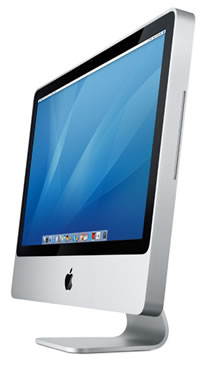
Apple did release the new iMac on Tuesday pretty much like everyone expected. It has a new aluminum enclosure, a glass covered screen and it's even slimmer than before. Much to my disappointment, but not surprise, none of the things I mentioned in my little iMac wishlist came true. Actually, I am a little surprised about the whole Leopard thing. Mostly because I really thought there was a good chance Leopard would be released early, especially since all the developers at WWDC got a copy of Leopard back in June. Also, two months before a major OS X release seems like sort of an awkward time to update any Mac. That said, I'm sure if Apple could release Leopard early, they would.
New iMac Released: Evolutionary more than Revolutionary
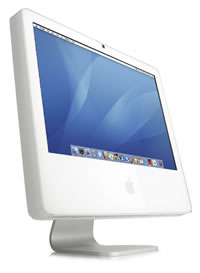
Apple is widely expected to unveil new iMacs tomorrow along with a new slim keyboard design. There are a lot of features that I hope will be integrated into the new iMac (like a nice big muliti-touch screen or a TV tuner), but instead I'm going to focus on just a few. The biggest thing I'd like to see with the new iMac is inductive charging along with new Apple wireless keyboards and mice that can be inductively charged. With inductive charging a wireless keyboard and mouse could be recharged just by being placed in contact with the iMac; no more replacing batteries or plugging-in charging cables. The stand of the current iMac is a great place to stash the keyboard and mouse, and with inductive charging it could be a great place to charge those devices too. The other thing I'd love to see included with the new iMacs is OS X Leopard, and that Leopard will be available early. Also, I can't believe Apple would launch a new computer in August only to release their latest and greatest new operating system in October. If the new iMacs don't ship with Leopard they should at least come with a coupon for a free upgrade to Leopard. The last two things I think Apple should include with the new iMac are really minor: more USB ports (current iMacs just have 3 USB 2.0 ports), and LED backlit screens for better energy efficiency.
Last Minute iMac Wishlist
In my last entry I discussed how Apple's approach to product development is affecting the technology industry, and citied some examples of how other companies are responding. I'd like to describe, what I believe to be, an important aspect of Apple's design strategy by way of this awesome image of Apple's products:
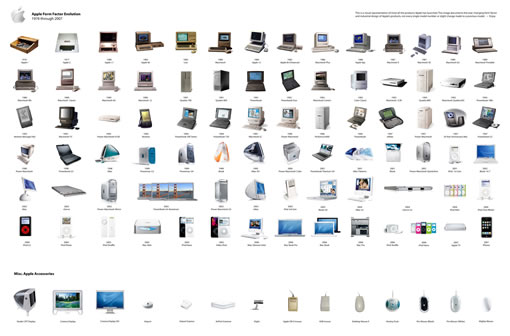
To me this image demonstrates that Apple approaches almost every product as though it's creating a design icon for the ages. The products have an incredibly long lifespan, for instance: the basic iBook design was basically unchanged from 2001 through 2005, the iMac design is basically unchanged from 2004 to the present, and the aluminum PowerBook (now MacBook Pro) and full tower desktop designs have lasted from 2003 to the present. On the surface this might be seen as a decision purely motived by aesthetics, but it's also enables Apple to minimize design and manufacturing costs. Instead of creating all new product designs (with new parts that have to be tooled and manufactured), Apple can focus on incremental refinements and improvements. By comparison companies like Dell and HP seem to release totally new (and often unremarkable) product designs almost every year. All those designs seem to be piling up. For instance Dell currently offers 8 different desktop enclosures to home customers, despite there really only being 3 distinct sizes. Even worse, most likely all those enclosures will be totally forgotten within a year.
Apple's Product Design Strategy
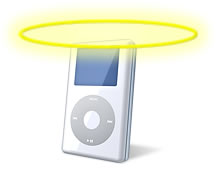
Something often attributed to Apple's astonishing growth is the "iPod Halo Effect" which is the idea that lots of people who bought iPods will buy other Apple product because they like the iPod so much. But there's another iPod Halo Effect at work that's reaching beyond Apple to the entire technology industry. The other iPod Halo Effect is that technology companies are finally realizing that customers want attractive, easy to use products, that interface seamlessly with their computers and, furthermore, that all new products need to be expertly marketed. The effects of this newfound interest in design can already be seen. Belkin has released a steady stream of new computer accessories with compelling designs, like the laptop@home products designed by Mike and Maaike and their line of attractive surge protectors. Also, Microsoft's Zune is another great example. With the Zune Microsoft abandoned their normal strategy of making the software platform and letting other companies make the hardware. Instead Microsoft created the Zune device as well as the Zune software and music store to deliver a much more cohesive user experience (at least in theory). Dell and HP have even stepped up their advertising with some pretty sweet tv spots. Dell also is ramping up their design capabilities, as evidenced with the new M1330. In this interview with Vio Luminosu, one of Dell's lead industrial designers, he says:
we've built up our internal design department we have a stronger goal and a stronger focus on design within our group
Of course companies trying to match Apple's product design may still find it difficult without also making some serious changes to how they approach hardware. One of the reasons Apple is able to execute such attractive and specific designs is that many of the components inside Apple's devices are custom manufactured just for Apple. Companies like Dell and HP, for instance, typically just design their own enclosures for someone someone else's hardware, which is often the same hardware used by countless other companies. That can make it difficult to achieve a unique appearance, feature set or sleek form factor. Of course, the M1330 is good indication that we may see Dell begin to change all that, and hopefully the M1330 will work as good as it looks. Also, while Microsoft's XBOX 360 looks great and is a leader in the current generation of game consoles, it's also suffering from terrible hardware failure rates. Microsoft made a big splash with Surface, but it's bulky hardware is destined to be upstaged by something thinner and more advanced. While hiring great industrial designers designers, user interface designers, experience designers, and marketing companies is a great first step, many tech companies will also need to increase their hardware capabilities so that the are able to support the vision of the designers and marketers they hire.
The Other iPod Halo Effect

Last week I attended a "Get Together" event for Pandora users. Pandora is an internet radio station that allows users to create their own channel based on a particular song or artist, then Pandora plays similar music. As each song plays you can give it a "thumbs up" or "thumbs down" which helps Pandora learn what kind of music to play. It's really a lot of fun to use and it's great for background music and for finding new artists. Also, Pandora is free. Tim Westergren, the founder of Pandora, ran the event and he essentially told stories about how Pandora started and took questions from the audience...for over 2 hours. The experience was absolutely amazing. We were able to get direct responses to questions, new feature requests, problems, and even details about the pending legislation in congress that could hike the licensing cost of music for internet radio stations and shut services like Pandora down. But more than anything, the event made all us listeners feel really important. Quite frankly, I can't think of too many more effective ways to build a brand and create customer evangelists than events like this. More companies should find ways to reach out to their customers/users directly and personally.
Pandora Town Hall

Every few weeks I dive into my site reports and check out how my hits are doing and what searches land visitors here. Much to my surprise among the top search terms is "Google Briefcase." My basic idea with Google Briefcase was for a desktop application that automatically saves your recent e-mails, documents, spreadsheets, and calendar events to your computer so you can access them when you're not online. Originally I thought Google Briefcase could be a bit like Outlook or Palm Desktop, with different functions that correspond to the different Google services it interfaces with. Or perhaps, it could manage synchronization and there would be full client side versions of Gmail, Calendar, and Docs & Spreadsheets. But that all changed when I found out about Google Gears. Google Gears is a browser extension (for Firefox and IE) that enables web apps to run offline in the browser. Presumably this method would be a much more minimal development effort than creating full blown client-side versions of web applications. Google Reader already works with Gears and they should totally develop Gmail, Docs & Spreadsheets, and Calendar to work with Google Gears next. I can't wait to edit my Google Documents without a web connection, or look up an address or phone number I conveniently only have in my Gmail...
Google Briefcase and Google Gears
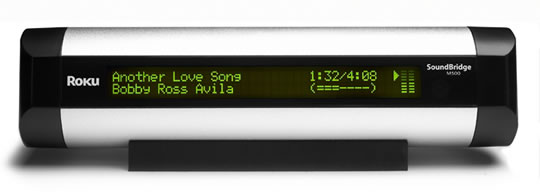
Roku, one of my favorite companies (whose products I don't own) cut the prices of all their products. The Roku SoundBridge (above) is a little device that allows you to navigate and play you entire iTunes library on your home speaker system wirelessly. The SoundBridge wirelessly accesses your iTunes library, just like other computers running iTunes can play from each other's libraries. Best of all the SoundBridge includes a display and remote for navigating all those tunes as well as basic playback functions; no running to your computer to skip a track like with AirTunes. The SoundBridge can also play internet radio stations, and now the base model is only $79, I think about a year ago it was double that. They also make the SoundBridge Radio which is basically table radio with all the SoundBridge functionality, so you don't need a separate speakers set. The SoundBridge Radio is now $299 (down from $399). I really hope this isn't a sign of desperation. I always thought Bose and Roku would be great partners, maybe if Roku really is in trouble Bose will buy them out.
Big Price Reduction at Roku

Notebook
Review recently got a little hands on with the
ASUS
EEE PC. Much to my surprise, it will sport an impressive 900MHz Intel
processor. The demo unit was running Linux which started up in about 10
second and shutdown in about 5 thanks to the flash based memory. It seems
the price has crept up to about $250 for the 8GM model (which is still damn
impressive), and it should still be available in late August. The Linux
operating system includes basic office applications for editing and creating
documents, spreadsheets, and presentations, as well as Firefox and a PDF
viewer. Also, much to my delight, theres an icon for Google
documents! Wow, this is honestly the first gadget that's come out in a
long time that I'm not only really excited about, but is actually in my price
range.
Asus
Eee PC First Thoughts [Notebookreview.com]
Asus EEE PC First Look
So after stepping back a bit, I think I may have to scale back my Apple multi-touch predictions. I still believe that multi-touch will be the next big thing, but I think the transition may be a little more incremental than I originally thought. After all, before Apple jumps into multi-touch with both feet they're going to need to be confident people really like it. And that will probably mean a few baby steps along the way. The news of a multi-touch mouse from Apple is a good example of such a step, even though I'm a little dubious that Apple will ever release it.
Next Apple Multi-Touch Products Reprise
Shortly after the Apple Store opened back home, my mom and I were in the mall and we stopped in. One of the things I showed her was the first generation iMac with LCD screen. I adjusted the screen to be a comfortable angle for us both to look at it, and started to show her around the desktop. While pointing to one of the icons on the Dock, my finger accidentally tapped the LCD screen which caused a little ripple around my finger as can happen with an LCD when you tap at little too hard. My mom noticed the ripple too, an her eyes instantly lit up, "Can you just touch the screen?" she said. "No," I said, "not quite yet." That simple experience was enough to convince me that touchscreens are the next big thing in modern computing; on the same order of the mouse and the graphical user interface. On June 29th, Apple will release the iPhone, their first product with a touchscreen since the Newton. So the question is, what will be Apple's next Multi-Touch product?
Apple's Next Multi-Touch Products
The other evening I started reading Wayne Westerman's doctoral thesis on "Hand Tracking, Finger Identification, and Chordic Manipulation on a Multi-touch Surface" which was written in 1999. Dr. Westerman went on to found "FingerWorks" a company that manufactured and sold a multi-touch tablet called the iGesture and several other multi-touch products based on technology created by Westerman and Dr. John Elias. In one section, Westerman describes different methods for detecting multiple finger touches on a surface, and I literally laughed out loud when I read this almost perfect description of Microsoft Surface:
Another approach is to place a camera under a translucent tabletop and image the shadow of the hands [81, 110]. Unfortunately the bulky optics under the table will limit portability and leg room...
p. 38 of the thesis, or p. 68 of the PDF document
Strictly speaking though, Microsoft Surface doesn't look for shadows of the
hands, instead near infrared lights are mounted under the surface as well as
cameras which pick up the reflected light from fingers in contact with the
translucent top. But still, his point about limiting portability and leg
room are dead on. Westerman doesn't go as far as to call it a
big
ass table, but he does describe more limitations of using cameras to
detect finger
touches.
And remember, this was written way back in 1999. Also, many of you
might be interested to know that a few years ago, FingerWorks was purchased by
Apple, and I have no doubt that Fingerworks technology is in the iPhone and
will probably be in a muliti-touch Apple tablet computer or multi-touch Cinema
Display within a year or two.
Microsoft Surface-like Hardware Described in 1999
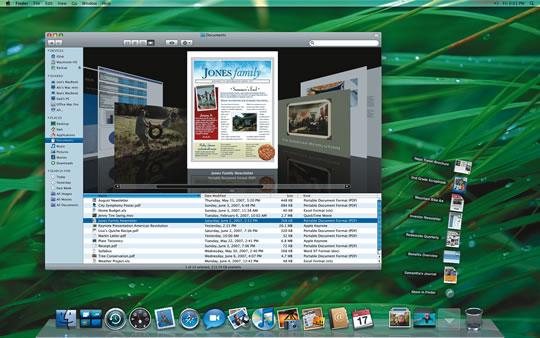
At this year's WWDC keynote, Steve Jobs gave a preview of 10 new features in OS X Leopard. So far, my favorite is definitely Quick Look. Not having to load Word or Excel just to make sure it's the file I'm looking for will be such a huge time-saver. After watching the whole keynote, I got to thinking about what features I'd like to see in OS X. Read on for my little list:
Leopard Features Wishlist
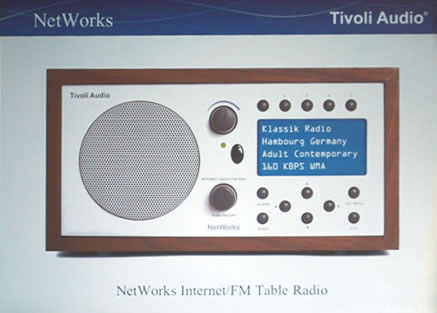
Since my very first entry here, I've been waiting for someone, anyone to come out with a compact high quality speaker system that works with AirTunes. Today Gizmodo broke the story of NetWorks and NetWorksGo, two new radios from Tivoli Audio with built-in Wi-Fi. It seems these devices will definitely be able to stream internet radio over a wireless network. But I'm really hoping that these devices will work with AirTunes. That will enable all us iTunes users to seamlessly play our music on the device without installing any additional software. Of course one limitation of using AirTunes might be that pausing or skipping tracks from the device might not be possible. However, that's probably an acceptable limitation for most people. I'd also love to see a device like this based on the iYiYi, that would just be the best of everything.
Tivoli NetWorks: Radios with Wi-Fi, maybe AirTunes?
Cnet News has a great article on the environmental benefits of transitioning music from CDs to digital files, something I wrote about here. So far, it seems things are getting worse before getting better. From the article:
there's no noticeable decline in the number of physical CDs found in landfills. While music fans are buying fewer CDs at record stores, they are buying more blank recordable CDs to burn their own discs from music acquired digitally.
Also it seems as though a fair number of MP3 players are ending up in
landfills as well, where they can release some pretty nasty chemicals.
As much as I sometimes feel toolish for babying my iPod, this sort of makes it
seem worth it. I still think the transition to digital music will
benefit the environment in the long run, even though it may take longer than
expected.
Digital
music no environmental cure
Digital Music and the Environment
Ok, Microsoft Week ran a little long. Here's a roundup of all the recent Microsoft related entries:
- Zune for Windows Mobile
- Microsoft, Zune, and hardware partners
- Zune Finally Installed!
- Zune Software Installer Needs Improvement
- Bill and Steve: The Historic Interview
- Microsoft Should Do More Hardware
- Microsoft SyncToy, best damn Backup app for home users I've ever used
- Microsoft Gets on their Multi-Touch Love with Surface
- Windows Home Servers
Microsoft Week Round-up
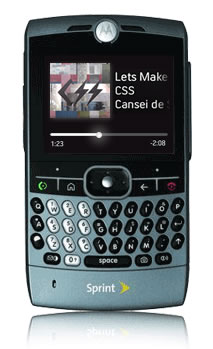
The iPhone is set for release on June 29th, and it will probably enjoy a huge amount of press attention. If Microsoft is working on a version of the Zune player software for Windows Mobile, they should try to release it on the same day or the day before. If done well, Zune for Windows Mobile would give anyone with a Windows Mobile smart phone or PDA a great media player experience. And if available as a free download, it would be a great way for Microsoft to ingratiate itself with Windows Mobile smart phone users, especially those who might consider buying a iPhone. By releasing the download with the iPhone launch, Microsoft could potentially piggyback on the iPhone's press and enjoy a great deal of coverage. Stories on the iPhone could easily mention: "Apple iPhone is on sale today for $499. But if you already have a phone that runs Windows Mobile, Microsoft has a free download of its Zune music player for you."
Zune for Windows Mobile
Even with all my installation problems, I'd still argue that after iPod/iTunes, the Zune and Zune Software has made the greatest contribution to the digital audio player landscape. While Zunes may not be flying off the shelf now, Microsoft is known for slow and steady improvement, and I wouldn't be surprised if within a few years the Zune is healthy competition for the iPod. As I discussed in my entry about Microsoft's strategy, Microsoft likes to create platforms but let hardware companies sell the actual devices. With the Zune, Microsoft wisely made the player, software and online store itself, in a uncharacteristically Apple-like move. However Microsoft could eventually do something Apple never would: let other hardware companies make devices that are compatible with the Zune platform. When and if the Zune establishes itself in the market and in the hearts of consumers, Microsoft should seriously consider allowing other hardware companies make Zune compatible devices.
Microsoft, Zune, and hardware partners
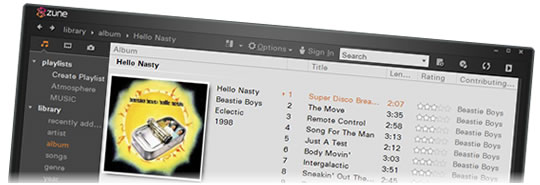
Woohoo, I was finally able to install the Zune Software! I've played around with the app just a tad, and so far I like it a lot more than I thought I would. It's clean, snappy and attractive. Read for a short rundown of the installation problems, and some quick ideas of how the installer might be able to avoid this problem in the future.
Zune Finally Installed!
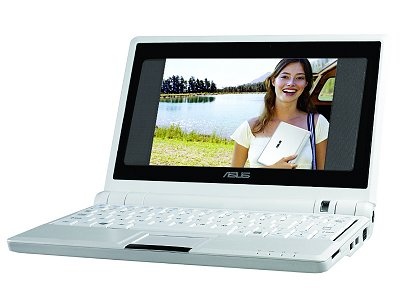
The $199 Asus EEE 701 laptop may just give the OLPC's XO a run for it's
money. Set to be available in August, the EEE reportedly will run Windows
XP or Linux and has handy features like Wi-Fi and a webcam right above the
screen like a MacBook. I also read that the EEE will have a
built-in SD card reader, but I haven't been able to verify this.
Honestly, the EEE is pretty much the device I've been waiting for: an
inexpensive laptop for web browsing and blogging. Here's the spec list
from Asus:
Display:7"
CPU & Chipset: Intel mobile CPU & chipset
OS: Linux/ Microsoft Windows XP compatible
Communication: 10/100 Mbps Ethernet; 56K modem
WLAN: WiFi 802.11b/g
Graphic: Intel UMA
Memory: 512MB, DDR2-400
Storage: 4/ 8/ 16GB Flash
Webcam: 300K pixel video camera
Audio: Hi-Definition Audio CODEC; Built-in stereo speaker; Built-in microphone
Battery Life: 3hrs (4 cells: 5200mAh, 2S2P)
Dimension & Weight: 8.85 x 6.5 x .82~1.3 in, 2lbs
It's amazing how just by making a laptop lightweight and cheap adds
to usefulness and versatility of a laptop. Read
on to understand what I mean.
The $199 Laptop from Asus I want NOW

I was in the middle of writing an entry about the Zune, when it occurred to me that the iPod attracts so much attention, it seems hardly anyone realized that the real competition isn't the iPod, it's iTunes. After all, without iTunes the iPod is just sleek paperweight. I thought if anyone wouldn't overlook the importance of making a great music jukebox and music store, it would be Microsoft with all it's emphasis on software. So I began downloading the Zune software to check out how it compared to iTunes. The first thing the installer does is check for updates. Huh? I just downloaded it, how could there be updates? Somehow though, there are, and it has to download them. This on top of the time I spent downloading the installer. Finally it finishes with the updates, and I get this lovely "Installation Error" message above. Wow. There's a link on the screen so I click it which instructs me to dive into Windows Event Viewer to try to figure out what happened. Double Wow. This is where the average person would just give up. I've been using Windows since forever, installed countless applications, and this is the first time I've had to look in Windows Event Viewer to troubleshoot an installation. Also I've used every version of iTunes since version 4, and I've never had any installation problems. Now, I don't own a Zune, I just wanted to try out the program, which you'd think would be something Microsoft would want to encourage. But this experience has been totally disappointing and frustrating. I even found myself getting annoyed at the language on the help page:
Use the information in the Date and Time columns to locate the events that were logged for MsiInstaller during the time that you could not complete the Zune software installation.
Are you kidding me? When "I" could not complete the installation?! It's the Zune installer that couldn't complete the installation, and somehow I'm getting blamed. The copy should read more like "during the time when the Zune software installation failed." Microsoft really needs to work on Zune software installation experience and try to keep from blaming users for their software problems in help documentation. I'm going to work on installing it again tomorrow, even though it really doesn't deserve another chance.
Zune Software Installer Needs Improvement
Check out the historic interview of Bill Gates and Steve Job from the "All Things Digital" conference, courtesy of Gizmodo.com. I was shocked at the number of times I laughed out loud while watching these interviews. Both Bill and Steve came out huge winners in this interview.
Bill and Steve: The Historic Interview
Microsoft should ship more hardware! There I said it. I’m not saying Microsoft should become an all out hardware company, but its made great such contributions with the XBOX, Zune and now Surface that I wish they would do more products top-to-bottom. Microsoft’s typical strategy is to create software platforms, but the actual products are sold by hardware companies. This has a lot of advantages for Microsoft, and it creates opportunity for the hardware companies, which is good for the industry as a whole. But the strategy also has some downsides especially in the early stages of a new device or market.
Microsoft Should Do More Hardware

This is sort of another "You Should Do That" style post. If you use
Windows and are looking for a great back-up solution, you should try Microsoft
SyncToy. Before I got SyncToy backing up my work, photos and music was
such a chore I just didn't bother. But since SyncToy it's actually
fun. The interface is simple and even fun to use, and it provides a lot of
functionality without being overcomplicated or confusing. To understand
why I love it so much, please read on, but if you're the "I'll believe it when I
see it" type just go download it.
Microsoft
SyncToy 1.4
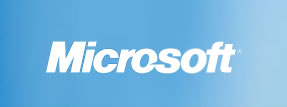
Given that the last two entries are about Microsoft, I've decided to do a bunch more. Admittedly, I can be pretty rough on Microsoft at times. But I assure you, it's out of love. For all my Apple coverage and admiration, my primary computer runs Windows XP and despite being almost 4 years old, it still runs like a champ (knock wood). Also, I know brilliant people work at Microsoft, and I sometimes find it frustrating when they seem to miss the obvious.
Microsoft Week!
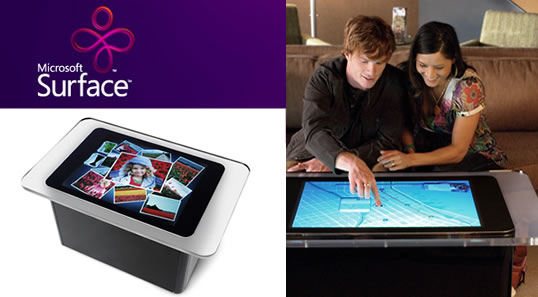
Microsoft has just announced their new product
Surface.
Surface is 30" multi-touch display on the surface of a table which can not only
react to multiple fingers (and users), gestures, but even devices placed on the
surface. There's a great
video
where the user places a wifi digital camera on the table and the photos appear
to spill out of the camera. The user then places a cell phone on the table
and begins dragging photos onto the phone. The demonstration videos are
really incredibly impressive, and the technology holds incredible promise.
However, these devices are going to cost between $5,000 and $10,000 and are
currently only being marketed for places like hotel lobbies and in-store
displays. The other significant downside is that, like the
Microsoft
TouchLight and Perceptive Pixel Displays, Surface uses cameras and rear
projection to sense finger contact and display the image. That means the
space under the table top is used for the display components, not your legs. This makes
Surface look more like a conventional CRT TV turned on it's back than a
table. As always this is really great research from Microsoft that will
help bring this new interface mainstream. But until these multi-touch
displays can be built around an LCD or even Plasma display, don't
expect the technology to spread too quickly. Also, given that
Apple
has lots of multi-touch related patents filed, I wouldn't at all be
surprised if Apple releases a multi-touch LCD display or tablet computer at some
point this year.
Microsoft
Surface
Microsoft
Surface: Behind-the-Scenes First Look (PopularMechanics.com)
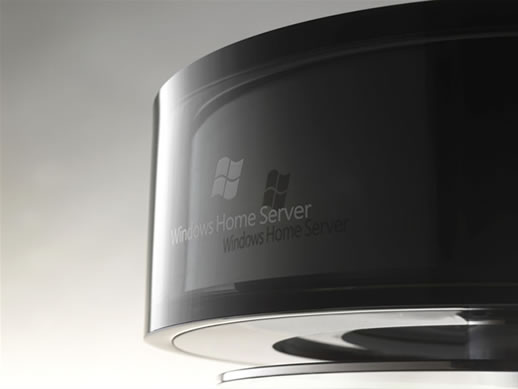
Microsoft recently announced a new platform called Windows Home Server. This will enable a new breed of NAS devices (home servers, you might call them) to collect and store music, movies, photos in one place from all the computers on the network. That means families will have an easier time consolidating photos and music into one source. Windows Home Server can even enable users to access their content securely over the web (wow, I didn't realize what a security nightmare this is going to be until I just wrote it). The devices will also be able to preform automated backups, something most people should do, but don't. Currently there are no devices available using Windows Home Server, the image above is a concept product by Carbon Design that will never be released (more pics here). I'm personally really psyched about these devices, I use Microsoft's SyncToy to backup my PC and absolutely love it. Also if these devices can consolidate my and my girlfriends music library into one source I'd be happy dude. However, this is Microsoft we're talking about, so I'm just a tad skeptical...
Windows Home Servers
Back in March TheyShouldDoThat.com turned 1 year old. And just a few weeks ago I posted my 100th entry on the blog. So, to celebrate these meaningless milestones, I've prepared a little "Best of" posting of some of my favorite entries. I've had a blast writing the blog, and am looking forward to keeping it up. Enjoy.
1 Year/100th Entry Best of Posting
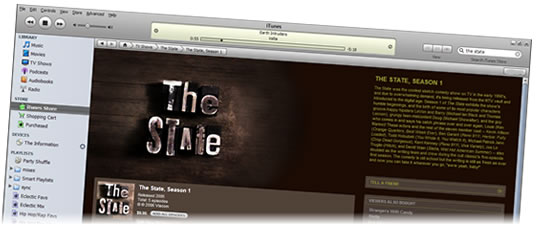
The first season of The State is now available on iTunes! Hopefully this will pave the way for Mr. Show, Upright Citizens Brigade, and other great sketch comedy from back in the day being added to iTunes as I proposed in one of my first posts. I've already downloaded the episodes and can't wait for more to be added.
MTV's The State Now Available on iTunes

In case you haven't figured it out I'm looking forward to all screens becoming
touchscreens. So I was totally shocked when the HP TouchSmart PC totally
snuck under my radar. The HP TouchSmart IQ770 is an all in one computer
with a 19" touchscreen, built-in web cam, memory card reader, and wireless
keyboard and mouse. It even has a built-in TV
tuner, DVR functionality and a remote control. You can also you can
dock an HP Photosmart printer on the TouchSmart for a real all-in-one
experience. The TouchSmart is being marketed as the perfect family
computer for the kitchen or living room. It has a cool customizable home
screen that can deliver weather, traffic, notes, a family scheduler, and photo
organizer, all of which can be driven with the touch of the finger or the
included stylus. The touchscreen interface is really perfect for a family
computer to keep organizational drudgery easy and even fun. Most people
probably just accept using a mouse as part of the experience of using a
computer, but it's easy to imagine how eliminating it could make using a
computer more immediate and direct. After all, with the the TouchSmart it
would be much easier to use the computer while standing up or doing other
things. And the elimination of the mouse, reduces the amount of space
needed for the device. In fact, I'm a little surprised the keyboard
doesn't also have built-in trackpad for the same reason. I'm totally blown
away by the TouchSmart, in many ways it's what the iMac should be by now,
however I do wish it were a tad smaller and could be VESA mounted. Overall,
Bravo HP! You can be my PC anytime :)
HP
TouchSmart IQ770 PC

I just got back from ICFF, where
I saw some amazing things. But one of the products I found myself thinking
the most about wasn't at ICFF, it was this wall mountable printer at the Cooper
Hewitt Design Triennial designed by
Ransmeier
& Floyd. I have to admit, I've totally come to accept the
predictable form and large footprint of most printers, but this concept design has totally changed how I think about
printers. In the days of flat screens, and wireless laptops, there's just
no reason why printers shouldn't follow suit. That said, one of the big
printer manufactures should totally make this thing! I'll buy two!
Also, the way it displays the printouts like a picture in a frame, it could be a
great way to share photos with friends and family if you could remotely print
directly to the printer. My only minor critiques of the product are that
it looks a little tricky to get your prints out of that little slot. Seems
like if the front were a door, or if it didn't have those side edges it would be
much easier to extract the pages. Also, while the concept for the product
is that it prints wirelessly, they didn't really address how it's powered.
Personally, I don't really like the idea of a battery powered printer, but I'm
not wild about having a power cord hanging off the printer when mounted to the
wall either. But if forced to choose I think I'd prefer the latter.
Ransmeier & Floyd at Cooper Hewitt Design Triennial
Ransmeier & Floyd
Wall-Mountable Wireless Printer

A few weeks ago my laptop started running extremely slowly, and I began bracing myself for the worst. I ran a virus check, and made sure my affairs backups were in order. I thought this was the end for my almost 4 year old laptop, until I noticed that my computer was unusually quiet. I next noticed that my CPU was running really hot (I have this handy app that displays my CPU temperature in my system tray). Sure enough the fan wasn't spinning. A few minutes with a compressed air canister and I had successfully blown out the dust that was gumming it up. Disaster averted. And probably just in time too, had I continued to run my computer without the fan it could have been permanently damaged. While I'm really relieved the problem was so minor, I'm also a little annoyed that my computer (or any computer that I know of) doesn't notify the user if things at the hardware level are running sub-optimally or not at all. Most new computers provide ways to run tests on almost every part of the system (including the fan), yet to run them it often involves booting the computer into some archaic looking "diagnostic" mode. But really the operating system should periodically run hardware level tests and notify the user if something fails or is preforming way worse than it should. In fact it doesn't even have to notify the user, there just needs to be a quick way for the user to check the results of the test when something seems off.
Automatic PC Self Diagnostics
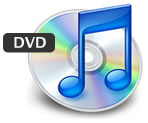
Title pretty much says it all. I don't understand why iTunes doesn't play DVDs. I loath having to launch another program just to watch a DVD, I should be able to do it from iTunes. I'm not saying Apple should ditch the standalone DVD player app in OS X, but iTunes should be able to handle DVDs as easily as it does CDs.
iTunes should Play DVDs
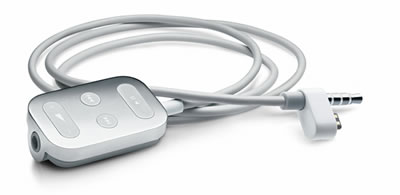
I love my iPod, but my one gripe is that it's very hard to do things like change the volume with the iPod in my pocket. Oh how I've longed for a little volume dial on the top of my iPod like on my old Walkmans. It's only really a problem when you're walking on the street at a good clip and don't want to risk pulling that ever so smooth and slippery iPod out of your pocket to change the volume or skip a track. This problem may only get worse if the next iPod's whole front surface is a touchscreen, similar to the iPhone, which will offer no tactile feedback. Hopefully they'll be able to offer simple controls that can be used without looking at the screen, perhaps using simple gestures. For instance, changing the volume could be done by sliding two fingers up or down the screen. But that could be hard to do from your pocket, and for those of us that like to keep our iPods in protective sleeves. Also, I can't imagine Apple will disrupt the design of the new iPod for a few buttons on an edge or front. But they may bring back the iPod remote as freebie with some model iPods, perhaps even one using Bluetooth. Back when I purchased my 15GB 3rd generation iPod it came with this great little remote pictured above. If Apple doesn't bundle a remote with the touchscreen iPod, I could see a huge market for attractive iPod remotes.
Will the iPod remote make a comeback?
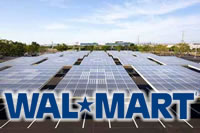
It's official Wal-Mart will install solar panel systems on 22 sites in California and Hawaii. The solar panels will be provided by BP Solar, SunEdison LLC, and PowerLight, a subsidiary of SunPower Corporation. Here are some highlights from the press release:
The solar power pilot project is a major step toward Wal-Mart’s goal of being supplied by 100 percent renewable energy. Each solar power generating system installed can provide up to 30 percent of the power for the store on which it is installed. By Wal-Mart’s estimates, installing the solar power systems will help reduce greenhouse gas emissions by 6,500-10,000 metric tons per year.
Also, as the recent CNET article points out:
Because of Wal-Mart's size, its investments in solar power could have a significant financial impact for solar providers.
So if Wal-Mart eventually goes all out with solar installations across all their stores, they could drive the price of solar panels way down. Gotta love those economies of scale...
Wal-Mart Embraces Solar Power
I love Gmail's ability to send from and check multiple e-mail addresses, it lets me keep all my e-mails at my fingertips in the Gmail interface I've love so much. However, Gmail only allows users to have one signature which gets appended to all outgoing e-mails. Gmail really should have the ability to set up different signatures for each outgoing e-mail address. That way folks like me, who use Gmail to check several e-mail addresses (including a few for various jobs), won't be stuck with the same signature on everything.
Multiple Signatures in Gmail
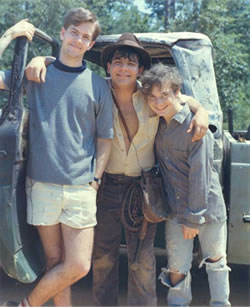
In the summer of 1982, Eric Zala (13), Jayson Lamb (13), and Chris Strompolos (12) began their 7 year quest to create a shot-for-shot remake of the classic Raiders of the Lost Ark. I had the pleasure of watching "Raiders of the Lost Ark: The Adaptation" and was amazed by the production and inspired by their dedication. The remake is incredibly faithful and an absolute pleasure to watch. Even through the grainy betamax recording and sometimes garbled audio, the cast and crew's enthusiasm shines off the screen. The scenery, props and stunts are particularly impressive: from the giant boulder that chases Indy in the opening scenes to the bar-fight complete with the set and cast members on fire. During the Q and A Eric Zala (Director) and Chris Strompolos (Indiana Jones) talked about making on summer vacation, and it occurred to me that they should start a summer film-making camp for kids (maybe between 8 and 14). Each summer the camp directors could choose a classic to remake, like Back to the Future or Willy Wonka & The Chocolate Factory, and the campers would do everything from making props and scenery, to directing and acting. The camp could introduce kids to the process of making a film, and even give kids an opportunity to focus on individual skills or facets of the production.
Fantasy Flim-making Camp for Kids
Recently Steve Jobs has again denied the possibility of a subscription model for music on iTunes, but conspicuously made no mention about a subscription model for videos. "People want to own their music," he said. What he means by this is that while many music subscriptions offer unlimited downloads, the catch is that when you end your subscription all the music you downloaded becomes unplayable. So essentially, customers of these plans are just renting music. While the concept of renting music may be unpopular, renting videos is something that everyone does. And Jobs made no mention about the possibility of a subscription-based model for iTunes videos that would essentially allow people to rent videos. A subscription plan for iTunes videos could be widely popular; even with the same people who would never want to rent music. I've written about the need for an iTunes subscription plan for videos here and here, and now that the iTV is out I still maintain that a subscription plan for videos is inevitable.
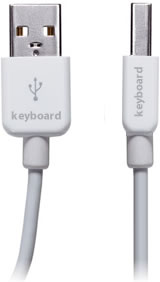
I was going to write a clever little entry explaining this idea, but I think the image pretty much does a better job. They should totally label the connector end of the cable so you A) don't unplug the wrong cable and B) know what that the cable is for, years after the gadget is long gone. Also, for devices that use generic cables like AV equipment, or printers the manufacturer should include adhesive labels with the product name that the user can stick to cable. Lastly, some one (or some company) could print up adhesive labels with the names of common devices (iPod, keyboard, mouse, TV, VCR, DVD) that the user can just stick on the cable or plug. However, while most people would probably find it useful, they probably wouldn't be willing to pay for the labels.
Cable Labels
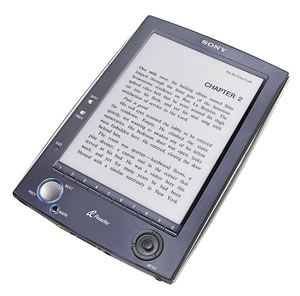
Since first reading about electronic paper displays developed by
E-Ink, I've eagerly awaited
their arrival. Electronic paper displays are readable from any angle,
high resolution, incredibly thin, use extremely little power, and can even
be flexible. Currently the displays are grayscale, and text appears in
black on a white background. Also once something is displayed on the
screen it stays there without using any power; energy is only needed to
change the image.
All those attributes make the displays perfect for a new breed of devices:
electronic document readers, like
Sony's
E-Book reader. The hope is that e-book readers can replace
everything from printed books to newspapers. Imagine going on a
vacation with a dozen novels and travel guides all in one in compact
device. Less paper bulk isn't just convenient for you, it's also great
for the environment. The potential for signage is also huge, imagine a
posted train schedule that looks just like paper but can be changed
instantaneously, inexpensively, all with minimal energy use.
However, there's a significant downside to these displays: the refresh rate
is between 1000ms and 500ms (or 1 second and .5 seconds). That's at
best about about 100 times slower than an LCD display. That may be acceptable for an electronic book or signage,
but until the refresh rate is dramatically decreased we may not see
electronic paper displays in many PDAs, smart phones, and other gadgets that
need really snappy interfaces.
I had originally thought that electronic paper displays were a perfect fit
for the
MedTab,
a PDA for medical professionals, but with such a slow refresh rate it now
seems like the device has the potential to annoy a lot of busy and impatient
doctors.
The Illiad by
iRex, another device using electronic paper displays, has pen and tablet
capabilities. Which is a great feature, especially for those of us who
like to make notes in the margins of our books. But I cannot imagine
writing on a surface that takes (at best) half a second to display what I
just wrote; it would be maddening.
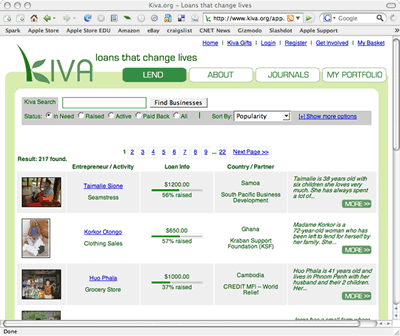
Microfinancing is the little idea that's making a
big
impact to help reduce poverty. And
Kiva.org makes it easy for
anyone to get involved. Founded and run by in impressive list of Silicon
Valley celebrities, Kiva.org allows anyone to make a loan to an entrepreneur in
the developing world. The businesses, like the loans, are small, but the
impact is tremendous. Browsing the site you'll find everything from a
grocery store owner in Cambodia, to a baker in the Dominican Republic. All
the business are verified by
field
agents from microfinancing institutes, and currently 100% of loans have been
paid back. The loan can be transferred via PayPal, which has waived their
typical transaction fee so that 100% of the loan goes to the entrepreneur.
I could go on about how inspiring this is, but if you have 15 minutes, I'd
strongly recommend just watching this
video
clip from PBS's Frontline.
Kiva.org
Thanks Rob!
Kiva.org, Microfinancing Made Easy

Dell may have made a big slash with IdeaStorm, but there are actually lots of
places to submit product ideas. So armchair inventors, get submitting:
Dell Ideas - Dell
Idea Storm
Firefox Ideas -
Firefox/Feature
Brainstorming Wiki
Apple Ideas -
Apple
Feedback Forms
Video Game Ideas -
MyGameIdea.com
Everything Else -
Halfbakery.com
Know of any more? Leave a comment.
Got Ideas? Here's where to send them
TheAppleBlog has a great article on why the green button in OS X is broken and needs fixing. To me the bigger annoyance is the red button. Sometimes the red button quits the application other times it just closes the window and leaves the application running. The logic behind the behavior is that if the application only ever has one window, such as System Preferences or Calculator, the red button quits. But if the application can have multiple windows like Microsoft Word or Safari the red button closes the window, but leaves the application running. It sort of makes sense, but unfortunately the logic is so obtuse that the button ends up seeming totally inconsistent. The big problem is the behavior is based on what the program is capable of, not it's current state. Most user don't have a clue which programs can have multiple windows and which cannot, nor should they really care. If I had to guess between iPhoto and iTunes which could have multiple windows, I'd guess iPhoto... and I'd be wrong. It would make much more sense if the behavior of the button were based on the current state of the application, i.e. how many windows the program currently had open.
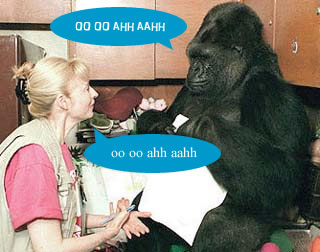
Since the mid 60s there have been several high profile gorillas and chimps that learned American sign language. Which is cool, but if you're ever lost in the jungle and want to ask a gorilla for directions or to crash in his nest for the night, the chances he will know ASL are slim to nil. Researchers should really get the gorilla to teach them the gorilla language, or "Gorillian". It really only seems fair that if the gorillas goes to the trouble of learning ASL, then researchers should make the effort to learn Gorillian. Some Googling didn't turned up much on the effort, which I find surprising. I'd think by now some researcher working late with an ape that knew sign language would have thought to himself: "Hmm, I wonder what the ape word for banana is?" followed immediately by the realization that right in front of him was an ape who he could just ask...

I listen to music on my computer approximately 100% of the time, so few things annoy me more than web pages with background music (worse still are those banner ads that talk, wow are those annoying). Usually the "sound off" button is hard to find and seems to appear only well after the music starts. I think it's time for web browsers to treat sound the same way they treat pop-ups. By default background sound should be muted (just as pop-ups are blocked), but users are notified that sound is muted and have the option to un-mute once or always for that site. This seems totally feasible, though it may be difficult given that most background music is played from within a Flash based website. I'm sure there's some ambitious young plug-in developer who's up to the challenge, and if not perhaps Firefox developers will create such a feature one day. I've already added this idea to Firefox Feature Brainstorming wiki, so my fingers are crossed.
Mute Web Pages
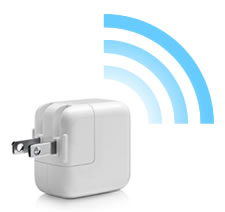
I love AirTunes! For those unfamiliar, AirTunes is a feature of the Airport Express Base Station that allows your computer to wirelessly stream music to a stereo or set of speakers. It works great and it's incredibly convenient for freeing your music from your computer without transferring music to an iPod or (bleh) burning a CD. The problem is that the only way to get AirTunes is with the $150 Airport Express Base Station which is also a wireless router, wireless range extender and wireless print server. While $150 for all that really is a good value, it's a little steep if all you want is AirTunes or already have a happily working router. However, it would be really great if Apple made a $40 or $50 device that just provided the AirTunes functionality. I'd pick one up in a heartbeat, maybe even two. Who knows, maybe Apple could never make a standalone AirTunes device in the $40-$50 price range, but it seems pretty feasible to me. Alternatively, it would be great if Apple added AirTunes to more devices like the iPod Hifi (as I proposed ages ago) or even an iPod dock.
Standalone Apple AirTunes
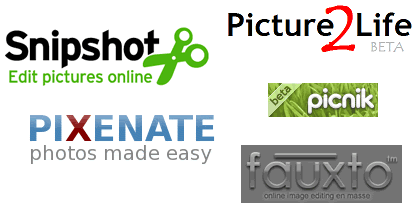
Extremetech.com has a great roundup of 5 web based photo editors. The article is pretty comprehensive (i.e. long), and it's probably more fun to just play with each of the applications. So without further ado:
Enjoy! And feel free to leave a comment about your favorite.
More Web-Based Photo Editors
There's another huge cost to these highly configurable systems: customers have to actually configure them, and then wait for their computer to be built. Most people I know, don't understand the difference between hard drive capacity and memory capacity. And while people might enjoy selecting all the most expensive options to build that $9,000 system, when it comes to actually configuring a computer with the right balance of power and affordability, most people don't have a clue. To anyone smart enough to realize they don't know the first thing about computer components, a built-to-order PCs is hugely unattractive (which is why lots of people go to the nearest electronics big box store and buy whatever they're talked into). Instead most customers would rather just buy a computer with the specs they need and that day or the next. Before long most consumers will feel that configuring a new computer is something they just shouldn't have to do, and they're right.
It's official! EMI will make their entire catalog available on iTunes DRM-Free. In press converence last night in London EMI's CEO Eric Nicoli and Apple's Steve Jobs made the announcement and took questions. Here are the major details.
- The EMI Catalog will be available DRM-Free on iTunes in May
- The format is AAC 256kbps (twice the standard quality)
-
These Premium Tracks will be available for $1.29
- Entire albums will be sold DRM-free and higher quality at no additional cost
-
The Premium Tracks will be available alongside the standard versions that
include DRM for $0.99
- For $0.30 customers will be able to upgrade any existing EMI music they bought to the higher quality, DRM-free version
There seems to be some ambiguity on #4, according to EMI's Press Release:
Complete albums from EMI Music artists purchased on the iTunes Store will automatically be sold at the higher sound quality and DRM-free, with no change in the price.
Source
That would indicate that there would not be two options when buying an entire EMI album, customers would always get the premium version when they buy the album. However, Apple makes no reference to complete albums in their press release. Additionally, Steve Jobs said in the press conference:
We are going to address both these issues [DRM and sound quality] by introducing new version of our songs and albums that will be sold alongside our existing version. The new versions will be DRM-Free so they are completely interoperable and they will be encoded in 256 AAC...
Source - at about time 23:32
So next month we'll see if EMI albums automatically come in Premium format or if there's an option. Hopefully, the Premium album will be the same price as the standard album as was stated in the press release. Additionally, Steve Jobs predicts that half the iTunes catalog will be available DRM-Free by the end of the year by having more record labels agree to sell music DRM-Free. Also, EMI's CEO Eric Nicoli said that Premium Tracks would be available to other retailers including places like emusic.com.
EMI Goes DRM Free!

I just came back from
Blades
of Glory (funny,
Romany
Malco is quickly becoming my hero), but I seriously wanted to walk out
before the movie even started because EVERY preview was for the THIRD movie in a
series or a remake. I had to sit through previews for
Spiderman
3,
Pirates
of the Caribbean: At Worlds End,
Shrek the
Third,
Ocean's
13, and finally
Disturbia
(a remake of Rear Window). I love going to the movies and I don't have
anything against
remakes,
but this just about made me want to puke. It seems that roughly since the
Matrix Trilogy, no big movie studios want to make a big-budget film unless they
can squeeze three features out of it. Worst of all, as The Matrix Trilogy
proved, only the first film has to be halfway decent and people will see the
other two out of some twisted sense of brand loyalty. Plus the profits are
out of control because they film multiple films at the same time to reduce
production costs. The butchering of classics is just as bad.
Disturbia is perfectly emblematic of our youth-obsessed culture, it's Rear
Window set in the surburbs with teenage characters and somehow lots of girls in
bikinis. I don't really have a suggestion on this, I'm just fed up with
crappy trilogies.
Ok, as much a I hate to admit it Ocean's 13 does look like it has potential
thanks to
Steve
Soderbergh.
Attack of the Clones
Dell's recent financial trouble may signal a shift in how consumers buy computers. Dell pioneered the built-to-order PC, the idea being that customer ordered exactly what they wanted and Dell would never be sitting on unpopular systems. They streamlined the process out the ying-yang and beat everyone's prices. But now it's becoming harder and harder for Dell to turn a profit on the PCs they sell. While I'm sure there are tons of theories as to why this is the case, I'm going to offer up my own: after a certain point offering too many options causes more harm than good, and Dell is well beyond that point...
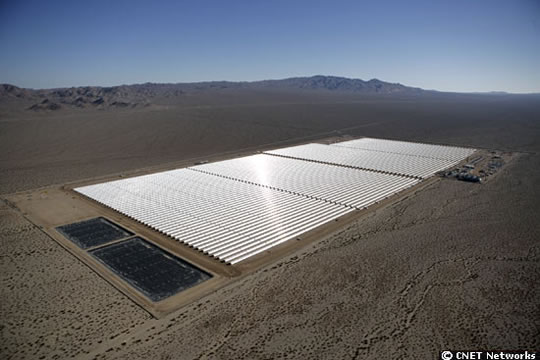
In undergrad I had a professor that thought that all of Nevada should be covered with photo-voltaic panels. Well, this 64 megawatt solar powerplant in Nevada doesn't use photo-voltaics but it will harness enough solar energy to power 15,000 homes. The project called Nevada Solar One uses parabolic mirrors aimed at a tube full of oil which heats the oil to make steam, which turns a turbine.
Full steam ahead for Nevada solar project (via Treehugger.com)
Nevada Solar One

My amazing sister turned me on to this amazing book: The Blue Pages is a Zagat style directory of companies' political contributions, business behavior and policies. I just ordered one for myself and am already obsessed with it. Each entry has a nifty little chart that shows what percentage of political contributions went to the Democratic or Republican party, it also lists the exact dollar amount given to each party. After browsing through it just quickly, it's a little disappointing (for Democrats at least), it seems that in general most companies contributed more to the Republicans and those that do contribute to the Democrats, contributed less. It was printed in January 2006, and it would be interesting to know if that trend has shifted at all in the past year. Anyways, I can't withhold my excitement about this book, without making just one tiny recommendation: They should totally make an online version of the book with data for a lot more companies, update the data annually, and provide graphs of historical data to show how a company's contributions changes over time. This book is great, but they're going to need to update it every year or so, and an online could not only display a lot more data, but would also reduce the environmental cost of producing books year after year.
The Blue Pages - $9.99
Thanks Gen!
The Blue Pages: How to Vote with your Wallet
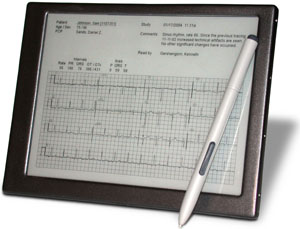
Just a few weeks ago Motion Computing and Intel announced their C5 medical tablet, which had some great features but the $2999 price tag may render it a non-starter. Now another medical tablet, from Emano Tec has emerged. The MedTab is small (5.5" x 7.5"), weighs 1lb, has a 12hr battery, and, most notably, uses an E-ink display. E-ink is a black and white display technology that is extremely low power and requires no backlight. Like the C5 it's washable, offers Bluetooth and WIFI connectivity, and is drop proof (probably even more so than the C5, since it doesn't have a hard drive). Interestingly enough it does run Windows CE, as I proposed, in my entry on the M5. However, the price is still sky high, $4,995 for orders under 50 units and $1,999 for orders over 50. While the form factory and battery life are are definitely a big step in the right direction for a medical tablet, the price is still way to high. White frankly I don't understand why it's so expensive, a Sony E-book reader using a comparable screen costs about $500 and a PDA with comparable specs costs about the same. Given that this is such a new company, I'd imagine the volume they're producing these things at is so low, that it's difficult for them to achieve any substantive price reductions due to volume. After all if ordering just 50 units cuts the price by over 50%, imagine what an order of a few thousand units would do.
Medical Tablet Using E-Ink Display
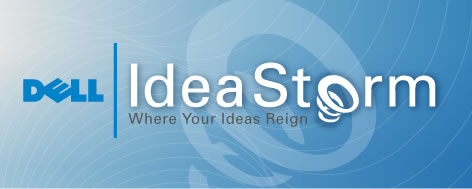
So Dell hasn't had the best year. Yet they did something few companies in their situation would have the guts to do, create a website where users can submit ideas and then vote on their favorites. The website, dubbed Dell Ideastorm, displays the ideas with the most votes on the homepage with other ideas on subsequent pages. Dell then tries to address the top ideas with a written response and, hopefully, action. The effect is something like a hybrid of Halfbakery and Digg. However, unlike Digg, and much to Ideastorm's detriment, top ideas don't seem to refresh on a daily or any regular basis. Consequently the top ideas on the homepage have pretty much been there since the site launched. They really need to address this problem, because the site basically becomes self-defeating if the top ideas don't have the opportunity to cycle. Nonetheless, this is still a great move for Dell, and I wish more companies would try things like this.
Dell IdeaStorm: Because People are Smart
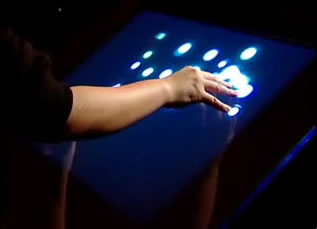
Jeff Han is back at TED this year, actually he spoke yesterday. I wonder if he'll be presenting anything new since the video released with the Fast Company article. If he presents a multi-touch display that doesn't rely on cameras and projectors, I'll flip.
Jeff Han Back at TED

Rumor has it that Adobe is readying a web-based version of Photoshop, which is nothing short of awesome. But until it’s finally released there’s Picnik. With Picnik you can perform basic image editing tasks like resizing, cropping, and exposure (levels!) and color correction. It's all web based with great speed and compatibility across browsers and platforms thanks to its Flash based interface, and you don’t even need to create an account to use it.
Picnik.com [via WebWare]
Web-Based Photo Editing with Picnik
The great thing about web based applications is all your data is stored on a server instead of on your computer and the worst thing about web based applications is all your data is stored on a server instead of on your computer. As much as I love Gmail, Google Calendar, Documents and Spreadsheets and all the other Google applications I've been burned more than once by not having an important e-mail or document on my computer when I couldn't get to an internet connection. Google should really create a desktop application that automatically saves recent e-mails and active documents to your computer so you can get to your stuff when you can't get to an Internet connection, sort of like a briefcase that automatically grabs all your important stuff.
Google Briefcase: Access to your Google Apps when you're not online
These pictures of a MacBook Pro that took a bullet during a mugging in Brazil pretty much have me eating my words about the durability of aluminum versus polycarbonate. The aluminum definitely seemed to protect the components of the computer. I do wonder how a polycarbonate MacBook or iBook would have fared in the same situation, as polycarbonate is used to make bulletproof glass.
photograph by fidgetingwildly
Ok, so aluminum is pretty tough
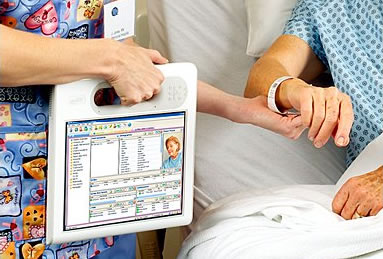
Ready for some scary statistics? Each year about 1.5 million people are injured due to medical mistakes, and about 90,000 are killed. Numbers like that make me want to write to Apple and tell them to stop releasing a cool new music player every few months, and make technology that could save lives. So I was totally psyched to see the C5 Tablet from Motion Computing developed for health care providers. It's a tablet computer with a built in barcode scanner, RFID reader, and camera. Plus it's fully sealed so it can be cleaned and disinfected. While a lot of really good thinking went into the device, the $2200 price tag will probably put it out of reach for most hospitals, especially the ones that need it most. Given that OLPC was able to make a $140 laptop, Motion and collaborator Intel could have tried a little harder to bring the price down. The main problem is that it runs full blown Windows, instead of Windows Mobile or a custom Linux build (like OLPC does). Read on for more on this.
Tablet PC to Replace Medical Charts
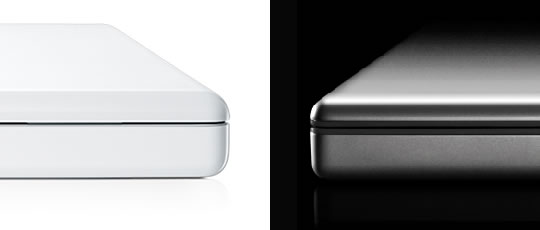
The MacBook shown at left has a polycarbonate plastic exterior, while the MacBook Pro (right) is aluminum. Both materials have their pros and cons, aluminum is stronger so it can be thinner than plastic yielding sleeker notebooks with that "I'm expensive" look. Also, aluminum may provide better cooling for the interior components of the computer than plastic. But when it comes to durability, my personal experience tells me there's no clear winner. Under impact or stress polycarbonate can dent, and aluminum can warp or dent. However, based on my observations, aluminum can be damaged more easily than plastic. Read on for why polycarbonate might just be a better material for laptops.
Polycarbonate vs Aluminum for Laptops
So this entry isn’t really a “They should do that” as it is a “You should do that.” Like most people, I love getting new stuff. But it’s crossed my mind a few too many times that buying stuff has an environmental cost. After all, everything has to be manufactured, consuming raw materials and energy, and then shipped, consuming more energy. However, there’s a simple way to make shopping a little greener that also saves you money: buy used or refurbished. In particular buying used or refurbished electronics, books, CDs, and DVDs, is a great option. Apple and Dell sell refurbished products directly to customers. And buying used stuff on Amazon couldn’t be easier. Read on for tips about buying refurbished stuff.
Shopping Greener, Buying Used and Refurbished

Rumors have started circulating that EMI will license music DRM-free. Recent articles in the Chicago Sun-Times and New York Times have all the details. Also, EMI is the only "big four" music company with an environmental policy, at least that I was able to find. According to their own figures they've reduced CO2 emissions from factories by about two thirds in 10 years. However, they haven't made much of a dent in CO2 emissions from shipping. One can only imagine what they could do if they were able to boost online music sales enough to actually manufacture and ship fewer CDs. EMI has also made significant reductions in hazardous waste, water use, and HCFCs (ozone depleting chemicals). One can only hope these numbers are as good as they seem.
Rumor: EMI to license music DRM-Free!
Plus EMI's Environmental Policy
First of all the big four music companies should totally license music to online music stores without the DRM restriction. Jobs's points in Thoughts on Music are well made that the DRM requirement is stifling a huge potential for sales. While they're at it, they should make album artwork available in PDF format and make digital music available in a variety of audio qualities which can carry a modest price difference. In short they should do everything they can to make digital music truly competitive with CDs. However, more than anything I'd like to see the debate about digital music shift away from DRM and technological compatibility issues, and toward the environment. Read on to see what I'm thinking about.
License Music without DRM Restrictions, refocus on the environment
Wow, talk about confluence. Just after posting about how great eMusic is, Steve Jobs releases a statement endorsing DRM-free music. When I wrote that hopefully we'll see other companies follow in eMusic's path I never thought Apple would be among the first. Here are some highlights, but I do recommend reading the whole statement, it's very readable and very interesting. Ok, now the highlights:
Though the big four music companies require that all their music sold online be protected with DRMs, these same music companies continue to sell billions of CDs a year which contain completely unprotected music.
Imagine a world where every online store sells DRM-free music encoded in open licensable formats. In such a world, any player can play music purchased from any store, and any store can sell music which is playable on all players. This is clearly the best alternative for consumers, and Apple would embrace it in a heartbeat. If the big four music companies would license Apple their music without the requirement that it be protected with a DRM, we would switch to selling only DRM-free music on our iTunes store.
...the music companies are selling over 90 percent of their music DRM-free, what benefits do they get from selling the remaining small percentage of their music encumbered with a DRM system? There appear to be none.
http://www.apple.com/hotnews/thoughtsonmusic/
The question is, how can we convince the big four music companies to license their music without the DRM requirement? Oh I know...
Steve Jobs on DRM-Free Music

Whenever I see a new article about the RIAA or CD prices I just roll my eyes, thanks to eMusic. With so many lousy music services out there, it's so nice to see one actually done right. For those unfamiliar with eMusic, it's a subscription based music download service, but you don't have to keep subscribing to listen to the music you download. That's because eMusic songs come in DRM free MP3 format that play on anything from iPods, to Zunes, to cellphones. The basic plan starts at $9.99 for 30 downloads per month, so it works out to about $0.33 a song. But the real reason I wanted to write about eMusic is that it's the first major (legal) experiment in DRM-free downloads and it appears to be working. So hopefully, we'll see eMusic's catalog increase and other download services follow in its path. I've been a member for about a year now and it's fantastic. EMusic only offers independent music, so while it's fine for me it's definitely not for everyone. They have a particularly good collection of underground hip-hop, which really keeps me happy. My only real complaints are that eMusic is not all that helpful in finding new music, and I really hate that I can't preview songs in my browser. Also, there really aren't as many user reviews and ratings as I'd like. They should really have some reward for reviewing and rating music, like 2 additional monthly downloads for every album you download and review. Oops, that one just slipped out.
Anyways, if anyone wants to try out eMusic leave a comment and I'll send you a link for free 25 downloads.
eMusic and DRM-Free Music
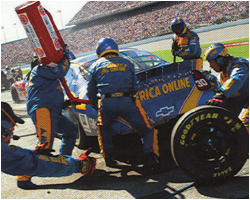
Several months ago I heard an interesting piece on NPR about a new study concluding that Hollywood was among biggest polluters in LA. Which makes sense, as building elaborate sets and shooting in remote locations is going to consume a lot of materials and energy. However, after listening to the story I couldn't help but wonder about the environmental impact of another form of popular American entertainment: NASCAR. While I feel as though I'm doing my part by minimizing my driving, it all seems trivial when NASCAR runs about 35 races a season, each with about 50 cars, getting about 5 miles per gallon, for 500 or so miles. That's about 1 million miles at 5 mpg, not even counting practices. This probably won't happen anytime soon, but NASCAR teams should be able to earn points by increasing their fuel efficiency. Such a move would be a great thing not only for the environment but for the progress and perception of fuel efficient vehicles.
Environmental Impact of NASCAR

I've seen a couple major blogs use YouTube just to stream audio, which really begs the question why can't you just upload an audio file to YouTube? Read on for what such a web app could be like.
YouTube for Audio
A recent article on the Register indicates that Microsoft may be working on Zune Filling Stations that will allow Zune owners to wirelessly download music to their Zune for free. This concept is pretty similar to the idea I wrote about shortly after the Zune launched. I'm eager to see how they actually implement this concept. If done well, this could be a very good thing for the Zune.
Microsoft wants Wi-Fi 'filling stations' for Zune II (The Register via Gizmodo)
Zune Filling Stations
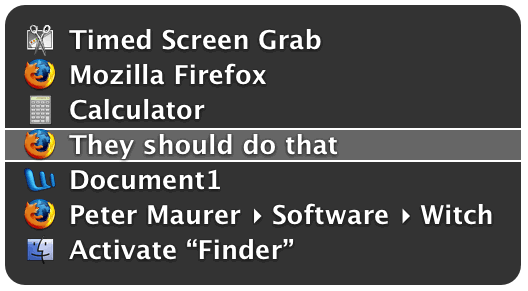
For any Windows users that are switching to Mac, or even OS X power users, Witch is an absolute life saver. Any long-time Windows user knows that the fastest way to switch applications or windows isn't the taskbar, it's good old Alt+Tab. However, to switchers the OS X equivalent doesn't quite cut it. Apple+Tab switches applications and Apple+` switches application windows. It’s two keyboard chords to do the work of one in Windows. But the real frustration, is that if the application window is minimized Apple+Tab (or Apple+`) doesn’t un-minimize it. Which is super annoying, why would anyone want to switch to an application and not see it? That's where Witch comes in. Witch is an application switcher AND a window switching in one handy keyboard chord. But best of all it will automatically un-minimize windows, it will even re-launch an application if it doesn’t have any windows (i.e. Finder). It uses a nice little heads-up display which lists all windows, plus it's very customizable (almost to the point of confusion). Read on for some handy customization tips for Windows Switchers.
Download Witch (via Shiflett.org)
Witch, Window Switching on OS X Done Right
"They should do that" is an exclamation. It's what you say when hit with an idea that seems brilliant, inevitable and obvious all at once. Unfortunately it's usually said in reference to something you can't do a damn thing about.
TheyShouldDoThat.com is a casual exploration of emerging ideas, gradual improvements, and missed opportunities in technology and modern life. It all began as way for me to catalog my ideas for new products, services, and projects. However, the site quickly grew to focus on the progress of new ideas. Still, many entries contain an original idea, recommendation, or prediction, often using the words "They should."
About They Should Do That
The new They Should Do That design is live! If it still looks the same to you press CTRL+F5, that should fix it. And if it looks a little different, but you can't figure out what changed, you are looking at the new design (it's not that much different). The font-size for entries is bigger, there are more fonts and more colors, and I added that mini description inside the big { } next to the logo. Soon, I'll actually link that to the "about" page (as soon as I finish it). For those still nostalgic for the old design, here's a nice little screen capture of it featuring, what else, but a post about Jeff Han's Multi-Touch interface.
New Design is Live

I remember reading about it right when it was announced but forgot I had previously blogged about this exact idea. In April of 2006 pictures of laser etched gadgets from Nike's labs started appearing on the web, and I wrote about someone should start a company to laser etch gadgets. Then in December of 2006, word broke that Phil Torrone, an editor of Make magazine, and Limor Fried were starting a small company in New York to laser etch gadgets. No clue when they started working on this project. Best of all, they're publishing business plans to start your own gadget laser etching company. Hmm...maybe I should take my own advice and get the plans to start one up in good old St. Louis...
Adafruit Industries Laser Etching
Laser etching coming to a laptop near you - CNet.com
They Did It: Adafruit Industries Laser Etching
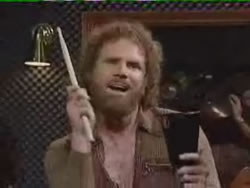
Ok! I admit it, I don't know the first thing about farming but this recent story about Anaerobic Digesters on "Living on Earth" was absolutely fascinating. The story focused on Blue Spruce Farm, a 2,000 cow farm, which uses anaerobic digesters to convert the cows' urine and manure into electricity. Previously, the farm was paying about $8,000 a month in electricity bills , but now the electric company pays the farm $2,000 a month for the extra energy they pump into the grid (win #1). This means that less energy is coming from sources like coal, which is bad for the atmosphere and dangerous to mine (win #2). Also, collecting and processing all the cow waste on site keeps area water cleaner (win #3). Lastly the byproduct of the process is a light and fluffy material which is used for bedding for the cows, which saves the farm another $7,500 a month (win #4). The Sierra Club is basically favorable about the use of anaerobic digesters on small farms, but against them on large farms (but that seems because they're against large farms in general).
Read the Transcript
Download the MP3
Cow powered farm, it's like win, win, win, win.
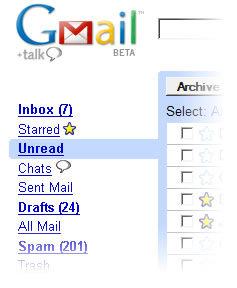
I love Google Gmail, but sometimes it's hard for me to find all the unread messages in my inbox when they're not in the first page of messages. They should totally just add an "Unread" menu item, which would quickly display all unread messages in the inbox. Currently the only way to view all the unread messages in your inbox is to search for "in:inbox is:unread" (which isn't that hard, but the menu option would sure be easier).
Gmail Unread Messages Menu Item
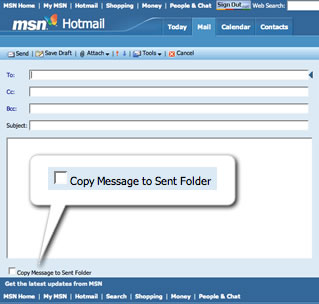
Recently a coworker asked me to help her send an e-mail attachment to her daughter using Microsoft Hotmail. After we sent the message I said, "There now you should also have the attachment in your 'Sent Mail' folder." But when we looked, the sent mail folder was empty. It turns out Hotmail does not automatically save sent messages. Instead there's a checkbox in the compose message screen to "Copy Message in Sent Folder." Worst of all there is no account setting to "Always save my messages to Sent Folder," instead the user must click the checkbox each time. How could they be so cruel?
I could tear into them more, but honestly, this just makes me sad. At least it looks like Microsoft will make it easy for Hotmail users to migrate to their new e-mail service, "Windows Live Mail," which does automatically save sent mail. Ok, maybe just a little more tearing...
Hotmail Cruelty
A new design is coming to They Should Do That.com. Nothing major, just some tweaks. But fear not, you'll still be able to enjoy the same typo riddled "writing" as before. Hopefully, the release of the redesign will coincide with the site explanation I've been kicking around for the last few months.
They Should totally redesign this website
A new video just surfaced of Jeff Han's amazing multi-touch interface. While the hardware driving this interface may be big, as it requires cameras behind the glass to see fingers touches and rear projection, the software is unbeatable. I wonder how much longer before he and his entire crew are snapped-up by Apple.
Thanks John!
Can't Touch This- FastCompany.com
Jeff Han's Multi-touch still kicks butt
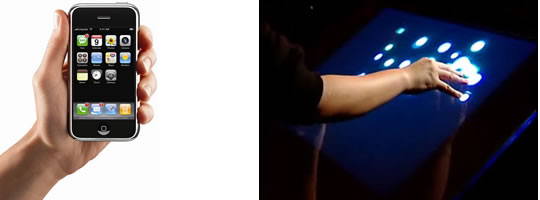
Since the iPhone announcement at MacWorld some interest has developed in the similarity between Jeff Han’s multi-touch demonstration and Apple’s multi-touch. They both sense multiple fingers touches and they both demonstrated the “pinch” zoom gesture. However, there are some pretty fundamental differences in the hardware driving the two multi-touch interfaces. Read on for a more on this….
Apple Multi-Touch and Han’s Multi-Touch
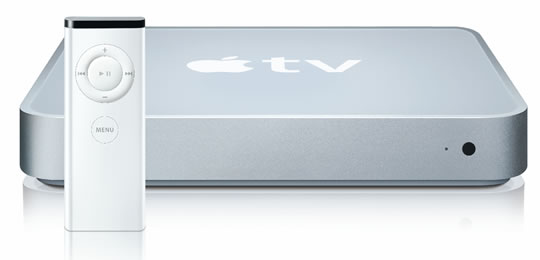
Admittedly, I'm a little obsessed with the AppleTV and after the announcement I eagerly went online to pull up some more info about it. Unfortunately, I couldn't find answers to my questions, so I called up Apple and spoke to an unbelievably helpful and gregarious sales rep. Most of my questions seemed to stump him and he had to ask someone else for clarification, so here's what I found out.
Things you can't do with Apple TV:
- Shop on iTunes - You can't buy music or movies directly from the Apple TV you have to shop from a computer.
- Connect an iPod - You can't connect an iPod to the USB port and access it's media.
- Access the Media on the Apple TV from your computer - You can sync media to the Apple TV, but you can't access media on the Apple TV from other computers on the network.
- Record Live TV, Play DVDs - Yeah, the Apple TV is not a DVR, just like we all expected. And it doesn't have a DVD drive.
I have to say I'm a little disappointed with the Apple TV. I think it should be able to do more, and perhaps it will through software updates. Anyways, one question the sales rep asked me is "When do you think you might order one?" To which I answered "When it can do the things, I've just asked you about." But it was a really good question and it got me thinking about what would make be plunk down $300 for an Apple TV. Read on for my list.
Apple TV: The Real Scoop

Since seeing Who Killed the Electric Car?, a film that focused on the demise of GM's electric car, the EV-1, I've been left with one single question: Why doesn't GM just bring it back? GM is on the verge of their 100 year anniversary, and I'm sure they're hoping to be around another 100 years. Do they honestly think in the next 100 years they'll never release an electric car? I'd be shocked if there isn't another GM electric car in the next 15 yeas. They should just bring back the EV-1 and get it over with. After all reviving an innovative product that inspired some of the most astonishing customer loyalty imaginable could be exactly what the company needs.
GM, Bring back the Electric Car

After Apple announced that videos would be available on iTunes, I wrote about the need for a subscription plan on iTunes. Now that Apple has announced the iTV, a subscription service is even more necessary, as the iTV and a video subscription plan would be able to compete with services like Netflix. In fact, if the iTV does have a built-in hard drive, a iTunes subscription plan will almost certainly be available. The big question is how would it be priced: based on the number of videos out at time like Netflix does? Or would they just offer a single "all-you-can-download" subscription. The latter seems more likely as there's such a varied amount of content on iTunes. After all it would really suck if the movie you wanted to watch didn't download because you forgot to delete a music video, or SNL sketch.
Of course, in a perfect world, Apple and Netflix would partner and to deliver access to the entire Netflix library via the iTV. As convenient as Netflix is, I hate having to wait for my next DVD to arrive by mail...
iTunes Subscriptions (Reprise)
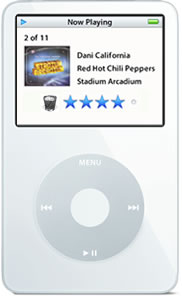
Everyone once in a while, when I'm listening to my iPod on shuffle a song comes on that I really hate or doesn't play right. The problem is I never remember to actually delete the song. If the iPod had a trashcan, I could just add the song to the trash, which could be automatically emptied when I sync. Or better yet, I could empty the trash on the iPod itself.
Trashing a song could be done through the rating interface, by adding a trashcan icon before the stars. That way rolling all the way counter clockwise would mark it for the trash. This even makes intuitive sense, as if the song really sucks (i.e. low rating) it should probably be deleted. Of course, that would make it hard to trash a song and keep it's rating...but hey that's for Apple to figure out.
The iPod Needs a Trashcan
First let me disclose that I’m a happy iPod owner, and I’ve never touched a Zune, so if either of those facts are a problem for you just stop reading and continue with your day. My main reason for writing this is that it annoys me to no end when companies release lousy products, and it infuriates me when the company has absolutely no excuse. The Zune is lame, and it’s created by Microsoft, one of the richest companies in the world with some of the best minds in the world. Building a portable audio player isn’t rocket science, but it does take, for lack of a better word, empathy and some understanding of customer’s values. With the Zune, Microsoft has demonstrated that it has neither.
10 Product Design Failures of the Zune, and 10 product design lessons
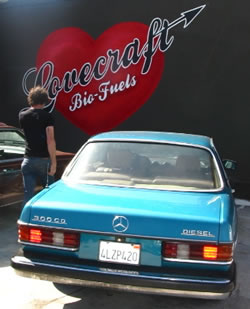
LoveCraft Bio-Fuels, based in LA, converts diesel cars to run on waste vegetable oil (WVO), straight vegetable oil (SVO), or bio-diesel. LoveCraft is founded by Brian Friedman, who invented and patented the devices used in the conversion. What makes a LoveCraft conversion so unique is that it uses the existing fuel tank; most conversions require a second tank to be installed for the biofuel. LoveCraft has converted about 900 cars, and continues to convert about 4-5 a day. While they focus on older Mercedes, they've also done VW Bettles, Ford PowerStrokes, and probably a lot more. After the conversion the cars can run on WVO from restaurants. This works out well for the restaurants too, as they'd normally pay about $1/gallon to have the waste cooking oil hauled away. In fact, Friedman reports that now many of his customers are restaurant owners. LoveCraft has(?) recently opened a biofuel refueling station, for those who don't want to deal with collecting and filtering WVO themselves.
LoveCraft Bio-Fuels: veggie fuel kickassery

Tesla Motors, based in San Carlos, California, is hell-bent on destroying every misconception about electric cars, and their Tesla Roadster does just that. It was designed by talent borrowed from Lotus, it goes 0-60 mph in about 4 seconds, and can travel up to 250 miles on a single charge. Did I mention it looks frickin' sweet? Anyways, it costs around $100,000, which is actually reasonable for a car with this kind of performance. In fact they're already sold out for the 2007 model year, and are taking reservations for the 2008 model. The Telsa Roadster is also whisper quiet, can be charged at home using the included charging device, or on the road using a standard outlet. The company plans to work their way down the car "food-chain" and release a sports sedan next.
Wired Magazine has a great article on the car and the company.
Tesla Roadster
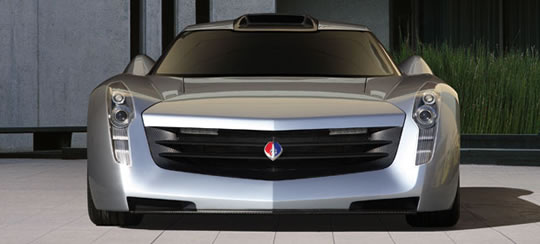
Recently Jay Leno unveiled his top secret Eco Jet supercar. It features a turbine jet engine that runs on 100% bio-diesel, and a "cruelty free" interior. It was created in collaboration with GM's design team, which explains is similarity to the Cadillac Cien, and a team of Leno's engineers. Unfortunately, while the Eco Jet is designed to be drive it isn't headed for production anytime soon, still it's an excellent demonstration of what's possible with enough cash, expertise, and enthusiasm. While there aren't a lot of specs available (like 0-60 time, or mpg) it does boast an impressive 650 horsepower. The fuel uses is 100% bio-diesel which is made from refined vegetable oils, so it's not quite as eco-friendly as straight vegetable oil (SVO) or waste vegetable oil (WVO), but it's better than bio-diesel blends which combine the bio-diesel and conventional diesel. And, oh yeah, it was all assembled in California.
Lost of links to videos, pictures and more info after the jump.
Jay Leno's Bio-Diesel Supercar: the Eco Jet

Seems like the next hotspot for automotive innovation might be just a few thousand miles west of Detroit. Specifically there's Tesla Motors making an electric roadster that goes 0-60 in about 4 seconds, Lovecraft Bio-Fuels converting diesel Mercedes to run on waste vegetable oil, and Jay Leno's EcoJet making a supercar that runs on bio-diesel (yes that Jay Leno). This probably is the best evidence that when high gas prices and smog become unacceptable, people actually start to make things happen. More on each of these amazing automotive savants shortly.
Is the next Detroit in California?
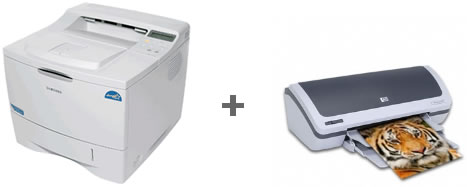
You'd think with hybrid cars and hybrid hard drives, some intrepid company would combine the two dominant printing technologies, laser and inkjet, to make a hybrid printer. The laser would print just black and the inkjet would print color, and the two could even be used on the same page. After all for printing text, the speed and sharpness of a laser printer is best; while for printing color, the price and size of inkjet printers can't be beat. Also, inkjet printers are extremely small and simple, so modifying an existing laser printer into a hybrid inkjet-laser printer shouldn't make it that much larger or more complex than one of those ubiquitous scanner, printer fax machine monsters.
Hybrid Inkjet-Laser Printer

Microsoft is heavily pushing Zune's wireless song sharing capabilities, with the tagline "Welcome to the Social." But until tons of people buy a Zune, "the Social" is going to be pretty lonely, which I think is actually the opposite of social. Microsoft would be wise to address this problem head-on by setting up Zune sharing stations that would allow users to connect to virtual (or actual) Zunes with tens of thousands of songs. Best of all, such a sharing station would also bring Zune owners together. The stations could be in malls or stores, and could have the Zune, Zune Accessories and staff that could give demos and answer questions. Plus everyone would love the free music, even if it's only good for 3 plays or whatever. Also, it would be really cool if the names of the Zunes at the sharing stations were the development team of the Zune and reflected each of their music tastes. Such a gimmick would be a great way to foster a "cult of Zune." Ok, I figured out what they could call the sharing stations: Zune Zones. Durr...
Zune Sharing Stations
The Zune, Microsoft's answer to the iPod, has built-in wireless, a feature often dreamed of for the iPod. However, for now, Zune's wireless can only be used to share music with other Zunes. David Pogue sums up this problem perfectly:
Microsoft also faces what’s known as the Dilemma of the First Guy With a Telephone: Who you gonna call? The Zune will have to rack up some truly amazing sales before it’s easy to find sharing partners. Source
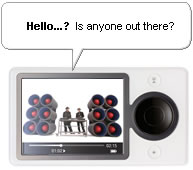
As if that wasn't bad enough, Microsoft has further crippled this feature by imposing Draconian playback limitations on songs transferred from Zune to Zune; the song is only good for 3 days or 3 plays (which ever comes first). Maybe if the limit were more like 10 days or plays, the restriction wouldn't be hopelessly frustrating. But what's really so surprising about Zune's wireless, is that it could be used for a number of other things that would not suffer from the "First Guy With a Telephone" dilemma. For instance, purchasing music over the internet, sharing music over the web, internet radio, wireless syncing, wireless connectivity to the XBOX 360, or wirelessly connecting to speakers.
Good ideas, gone lame: Zune's wireless
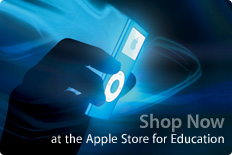
Well, it seems the days of modest student discounts on iPods are over. Since dropping the price of the standard iPod to $249, Apple also dropped academic pricing on all iPod models. Previously, students were privilege to roughly a 10% discount on all iPods, but now, prices for academic customers are the same as for everyone else. Hopefully, this isn't the first step in the elimination of all student discounts on Apple products.
No more student discounts on iPods :(

Usually Hollywood's insistence on remaking perfectly good films just because they're a few decades old or not in English makes me want to wretch. But if a remake is what it takes for more people to see Three Days of the Condor, then they should totally remake it. In addition to being an excellent thriller, it's eerily relevant to current events. So, rent it, buy it, whatever. Just watch it, you won't be disappointed. The Wikipedia article has a great synopsis, but be warned, it's full of spoilers.
Three Days of the Condor: A remake waiting to happen
Avi Rubin, a computer science professor at Johns Hopkins and author of the book "Brave New Ballot," recently discussed electronic voting machines on NPR's Talk of the Nation. The interview is absolutely fascinating and I strongly recommend listening to it. Interestingly enough, Rubin prefers paper ballots marked by a computer and scanned by an optical scanner.
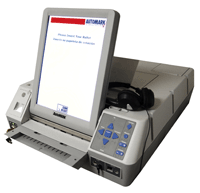
In this scheme the voter would cast his vote using a touchscreen computer (like the AutoMark VAT), but all the computer does is print out the marked paper ballot. The voter can then verify the printed ballot and perhaps even request an additional copy to keep. The filled out paper ballot is then counted and captured by an optical scanner. This way recounts and audits can always go back to the paper ballot and be preformed by hand if necessary.
From a voter standpoint, carrying a piece of paper between two sophisticated machines might seem strange but it actually is the most secure and verifiable method.
Also in the interview, Dr. Rubin describes the source code for voting terminals developed by Diebold (the leading manufacturer of electronic voting machines), as "full of security problems, flaws and bugs"; furthermore there's "no way to verify the votes, no way to preform an audit". Very scary.
Electronic Voting Machines: The middle school gymnasium goes high-tech
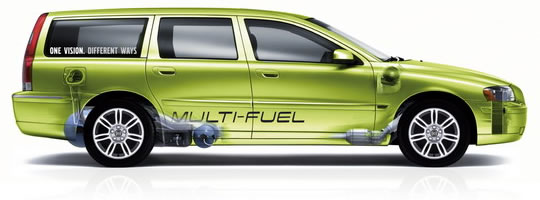
Volvo has created a prototype vehicle that runs on 5 different fuels; hythane (10% hydrogen and 90% methane), biomethane, natural gas (CNG), bioethanol E85 (85% bioethanol and 15% petrol) and petrol. Volvo's press release has a great quote from the project leader, Mats Morén:
The idea is to make use of the fuels that are produced locally, says Mats Morén. This means that less fuel needs to be transported between continents, and you can fill up the car on the fuel that is available wherever you are.
Wow, that's a refreshingly good idea. Read on for more info, and links to pictures.
Volvo Multi-Fuel: 5 Fuels, 1 Car, All Wagon
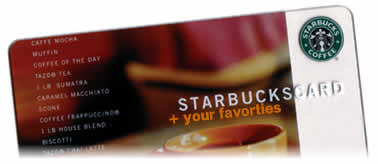
For anyone who's a regular at a coffee shop or quick-serve restaurant, this is sure to hit home. These days, most restaurants offer gift cards (or rewards cards), but they should really make that card able to save the customer's favorite orders. This would allow the customer to simply tell the cashier which favorite he'd like that day, without having to recite all the details. Such a system would prevent orders from being made wrong, and speed up the whole ordering process (i.e. shorter lines). Something like this would be perfect at Starbucks, that not only has regulars, but has tired, irritable, rushed regulars who expect their overcomplicated coffee to be perfect each and every time. Read on to see something like this could work.
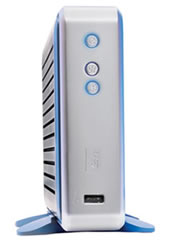
Well it isn't exactly my proposed printer with a built-in USB hub but it's close. Western Digital has a line of external hard drives with a built-in 2 port USB hub, one port on the front and another on the back. The hard drives are available in capacities ranging from 120GB to 320GB, and can connect to Mac or PCs via FireWire or USB 2.0.
At last I can ditch my little USB hub, and free up an outlet on my power strip.
Product Page
External Hard Drive with built-in USB Hub

At Apple's September 12 event, Steve Jobs announced the iTV, a little device that allows access to your iTunes Library on your big screen TV. The iTV won't be available until early 2007, and while the demo was very impressive it still leaves a lot of questions about what the final version will do. In particular whether or not the iTV has a built-in hard drive is not yet known for sure. However, this may not be so important because the iTV definitely has a USB port. So the real question is: "What can I plug into that USB port?" While the USB port is probably for connecting an iPod, perhaps it can also be used to connect an external hard drive to the network. Read on to learn why the iTV may just be the NAS (network attached storage) solution no one expected.
Is the iTV a NAS?
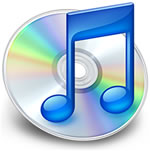
Last week Apple released iTunes 7 and it features not one but TWO enhancements previously described on "They should do that," needless to say I'm delighted. The first, and more hyped new addition is browsing by album artwork. The second new feature, which hasn't gotten as much attention, is that iTunes purchased music can now be transfered from an iPod to a computer. This means that if your computer hard drive dies, but you had all your purchased music on your iPod you haven't lost it. Woo hoo!
Apple iTunes Album View and Cover Flow View
Apple iTunes Sync both Ways
iTunes 7: They did it!
I think there's some kind of touchscreen fever going around, as a spate of touchscreen related entries has appeared on Gizmodo.com in last few weeks. Below are some highlights:
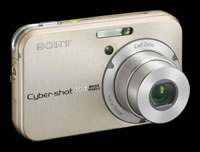
Sony DSC-N2 Cyber-shot With 3-Inch Touch Screen
Digital camera interfaces are notoriously tricky to use, hopefully employing a touchscreen will make navigating those menus and changing picture mode settings just a little bit easier.
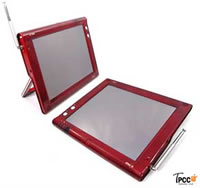
HiPDA Combines Tablet PC with TV and HSDPA
The title pretty much says it all, it's built around a 10.4" screen and unfortunately it doesn't look like it has a built-in DVD drive. To me this makes for a great kitchen computer, as I could use it to look up a recipe and then go back to watching "Project Runway." Wait did I say recipe and Project Runway? What I meant to say was porn and NASCAR, yes that is definitely what I meant...
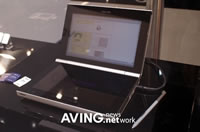
Toshiba Dual-Screen UMPC PDA E-Book Doohickey
While I definitely agree that this will flop, the idea has potential. Given how much hype the Optimus keyboard generated, this product proposes just doing away with 100+ OLED keys and just using a touchscreen. Of course, if it can't do multi-touch don't ask me what they'll come up with to do Capitalization, Ctrl-C or any other keyboard chords ...
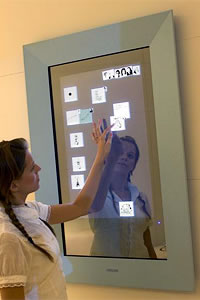
Philips In Touch Message Board Concept
Another concept touchscreen device from Philips Research, this device amounts to a very high tech message board which allows members of a household to record messages and send SMS messages to each other using this slick touchscreen interface. It's an interesting concept, but seems like it might be better served as a computer application than an expensive single-purpose device.
Gizmodo Touchscreen Round-Up
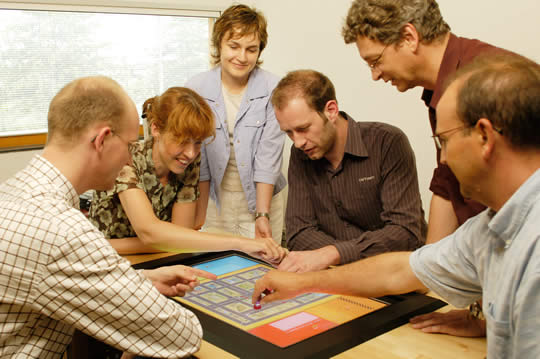
Wow, big shout out to my buddy John, for showing me this. Philips Research has developed a multipoint gaming touchscreen that can detect 45 touch points simultaneously that works with fingers as well as game pieces. Perhaps the most impressive part is that it's all built around a 32 inch LCD screen, so the whole thing is only around 10cm (4 inches) tall. Another interesting detail of the Entertaible is the technology used to determine touch locations, as it doesn't use any of the 3 most common methods.
The Philips Entertaible, however, is based on a series of infrared LEDs and photodiodes discretely mounted around the perimeter of an LCD screen.
Source: Philips Research Press Releases
Basically this thing detects finger placement like those obnoxious electronic door chimes they somtimes use in stores. I wonder what kind of accuracy they can get out of that?
One
Minute IFA Preview: Philips Entertaible
[techdigest.tv]
Philips
Research: Entertaible concept: combination
of electronic gaming and traditional board
games
Philips Entertaible: 45 Point Gaming Touchscreen
Microsoft has their own multipoint touchscreen reseach research prototype, the TouchLight. Now don't get too attached to the name, before you know it they'll re-name it "Microsoft Windows Powered Smart Touch Screen Professional Edition". Anyways, the TouchLight uses multiple cameras to dertimine hand and touch location. By tracking hand movement they plan to be able to detect 3D gestures to control the image on the screen. The TouchLight is also able to digitally capture documents that are pressed against the screen by snapping a picture of it with one of the cameras. Microsoft has partnered with a company called EON and is saying we'll see this by the end of the year. Ok, sure! Still a neat prototype, and further evidence that in the future all screens will be touchscreens...
TouchLight Video (YouTube.com)
via SlashGear.com
TouchLight Demo with Andy Wilson (channel9.msdn.com)
Microsoft's TouchLight makes 3D hands-on (CNET Videos)
EON Touchlight Video (YouTube.com)
More Touchscreen Research: Microsoft TouchLight
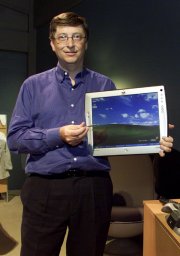
Before there were even rumors of an Apple tablet, Microsoft had already unveiled their ill-fated Mira concept. Microsoft, in a stunning branding move, renamed the friendly sounding "Mira" to "Windows Powered Smart Display," good one guys. Anyways, a Windows Powered Smart display is a tablet display that wirelessly connects to a host Windows PC, allowing the user to access the computer from anywhere in the house, up to about 100 feet away. The idea seemed good enough, as ideally the Smart Display would be cheaper than a laptop, offer many of the same functionality without having to upkeep another computer. However, the execution was so abysmal that it never stood a chance.
Read on for more about why Mira failed.
About a week ago I wrote about Jeff Han’s awesome multipoint touchscreen, and questioned if Apple was working on anything like this. Well, it turns out the answer is a resounding “Yes.” Going as far back as 2004, Apple submitted patent applications for a multipoint touchscreen, gestures for a multipoint touchscreen (including the “pinch” gesture), and other important touchscreen related stuff. So, yeah…pretty sweet…
Read on for a summary of Apple’s more interesting patent application with lots of help from hrmph.com.
Apple’s Touchscreen Ambitions
Given my current fascination with touchscreen displays and the idea that they may one day replace our current keyboard-mouse-monitor arrangement, I'm writing to announce that there will be a lot more posts about touchscreens, tablets and the like over the next week or so. Right now, I'm beginning to think that in the future we'll call multi-point, pressure sensitive, touchscreen displays, just plain old "displays."
They should do that Ideawatch: Touchscreens

Well it looks like I’m not the only person eager for Apple to release high resolution laptops. BaxterBrittle, so totally fed up with waiting for Apple, has taken matters into his own hands. He has successfully retrofitted his Aluminum 1GHz PowerBook with a 15.4” WUXGA display (that’s 1920 x 1200 resolution). To accommodate the 15.4” screen, the display enclosure from a MacBook Pro was used as the original PowerBook enclosure can only handle a 15.2” display. Reportedly the laptop does close and latch properly, but the display does overhang a bit. The combination of mismatched parts, and overall beastieness, has prompted the laptop to be dubbed “Frankenbook.”
Thorough instructions have not yet been posted, and the mod hasn’t been successfully completed on a MacBook Pro. If I were BaxterBrittle, I’d offer to retrofit anyone’s PowerBook for $100 plus the price of the new display.
It’s Alive! High Resolution PowerBook Created?!
For anyone who let out a resounding “Meh” after reading my Apple Table entry, check out this video. The video shows Jeff Han of New York University's Courant Institute of Mathematical Sciences demonstrating a large touch screen display that is pressure sensitive and can accept multiple touch points simultaneously. This enables multiple fingers (or people!) to interact with the display at once. While some of the examples are a bit silly, they still start to expose the power of the interface. I wonder if Apple has something like this on some workbench somewhere? Even if they do, they should still snatch Jeff up before someone else does, this thing is impressive.
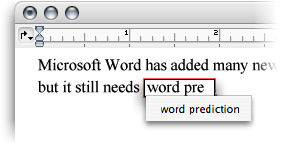
In 6th grade, I had to write a biography on a historical figure, so I chose Albert Einstein. Over the course of writing the paper I had to type words like “Einstein,” “Relativity,” “Berlin,” “Elsa” scores of times, and words like “Bohr” and “Quantum” several times. Even today, any lengthy document I write usually requires that I use a handful of nouns over and over again. Which makes me wonder (as I did in 6th grade) why doesn’t Word automatically detect repeated words and attempt to complete words as I begin to type? Excel has done this for years, so why not Word?
Word Prediction in Microsoft Word
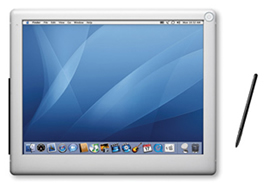
Since playing with my friend’s Nintendo DS Lite, I’ve been totally convinced that touch screen displays will be the next major disruption to computer user interfaces. I was shocked not only by how fun and rewarding the games were but how the touch screen opened up so many possibilities for game play. I found myself instantly wanting a touch screen experience for my computer that offered the same level of creative thinking about the interface. Which led to one invariable conclusion, Apple needs to release a tablet based computer, and not one of these dinky UMPCs, I’m talking about a real computer.
Dude, where's my Apple Tablet PC?

Even though supermarket chains have mostly eliminated small grocers from neighborhoods, they can’t eliminate the need for them. Whole Foods should really borrow a page from Apple’s playbook and open Whole Foods mini-stores in neighborhoods and dense urban areas. A small neighborhood Whole Foods could be the perfect place for basics (milk and soy milk, eggs, O.J.), a pre-made sandwich, some produce, cheese, wine, perhaps a small meat or fish counter, and, of course, fresh bread and pastries.
New from Whole Foods, Smaller Stores!

For those unfamiliar with Halfbakery.com,
it's a website featuring half-baked inventions
and concepts from anyone that creates an account.
While the ideas don't have to be well thought
out, not even a little, with so many authors
and posts the effect is something like monkeys
at typewriters. So there really is a huge
range of ideas from the sublime
to the ridiculous
(and some many which are both).
In fact, I usually consult halfbakery.com
before I post anything on They should…, and
if I had a company I'd scour the site daily
for the next big thing, because I'm sure it's
on there. The site is pretty much perfect,
except for the total lack of pictures and there
are so many ideas and categories it's a little
daunting to even casually browse. They should
really make a Halfbakery
book with pictures of the highest rated inventions
as well as some underappreciated editor's
picks. Given the talent
for making "fake" products that's
out there, they could easily hire designers
to create mock-ups of all the inventions.
I could totally see a book like this being
on par with the popularity of something like
The
Worst-Case Scenario Survival Handbook.
Halfbakery Book (with Pictures!)
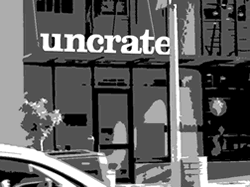
Uncrate.com is a funny thing: it’s like a stunning showroom of awesome products, but nothing is for sale. They feature the coolest stuff for an oft-ignored consumer: the materialistic man seeking not just good stuff but good-looking stuff. It really is amazing how many stores cater to essentially the same group of women customers (think of all the quirky boutiques selling unique jewelry, purses, clothes, home accessories, etc), but almost nothing exists for me(n). Which got me thinking, Uncrate.com should open stores. Read on to see how it could work…
Uncrate Stores - You Know, For Shopping
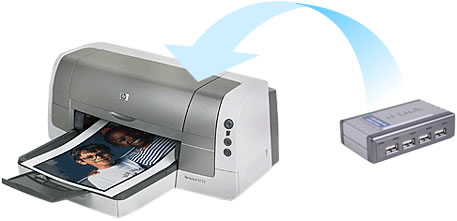
This one is pretty self explanatory, they should really make printers with USB hubs built-in. Computer users the world over would rejoice from the modest reduction of cables, the liberation of an outlet currently used by a powered USB hub, and the elimination of a trivial external computer accessory.
Printers with built-in USB Hubs

The St. Louis Centre is a 20 year old shopping center in the heart of downtown St. Louis. However, despite being a stone’s throw away from the St. Louis Convention Center, a short walk from the new Busch Stadium, having a Metrolink stop right outside, and sky-passes to all the neighboring office buildings, it is over a 50% vacant and contributes to a decaying downtown. To say it needs help would be an understatement, and as much as I’d love to see a comprehensive plan developed by Diller and Scofidio or Rem Koolhaas, pragmatically placing some much needed businesses and services would go a long way. Currently the plan is to turn it into more condos and offices. However, the St. Louis Centre should become a response to the needs of new downtown loft residents.
St. Louis Centre Redevelopment

People have finally figured out that our dependence on foreign oil is not such a good thing (go fig…). While this won't make everyone go out and buy a hybrid, or make such a difficult lifestyle change as driving the speed limit, there is something people could do to reduce consumption of foreign oil: buy American. The US does have oil wells, so why not market and sell domestic oil to Americans? They should have label at the gas pump that certifies the fuel as American Oil. We already have labels for things like organic food, fair trade coffee, Angus Beef why not gasoline? This would even help reduce emissions because the oil would have to travel less from the well to the consumer.
Certified U.S. Oil
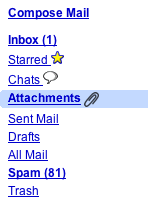
E-mail attachments are a funny thing, everyone e-mails files to themselves, so at some point inboxes start to serve as file storage. Given that Gmail offers over 2.5 gigs of storage, I’d imagine Gmail users do this way more than most e-mail users. I don’t know of any e-mail application that deals with this use of e-mail very well. Usually searching for attachments is a clunky function, and searching inside attachments…forget about it. So if Gmail provided an interface which made searching and browsing e-mail attachments significantly easier, they’d really be going into uncharted territory.
Browse Gmail Attachments
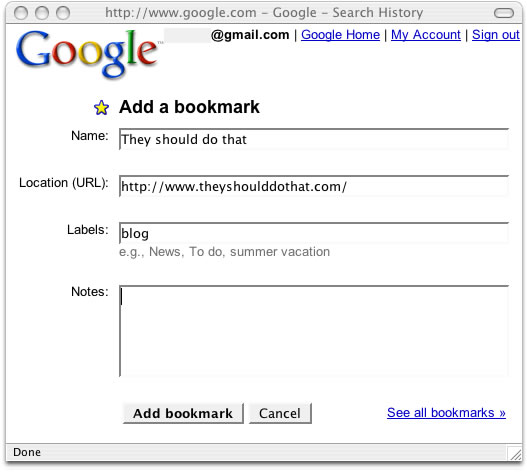
Google recently added this "Add Bookmark" pop-up window, which makes bookmarking a site much easier. The window is launched by a bookmarklet that can be added to your browser links toolbar, so it's very quick and easy. Obviously the window bares a pretty close near identical resemblence in both form and function to del.icio.us's tag window.
Google Bookmarks: Adding Easier, Gunning for del.icio.us
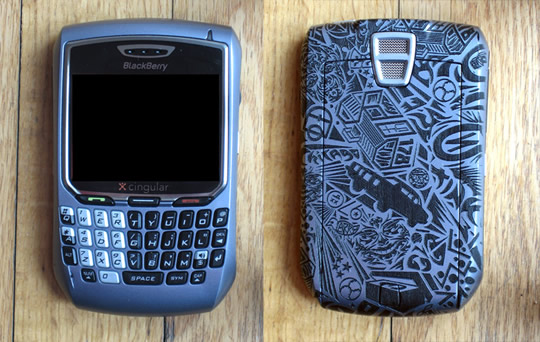
The pictures of various laser cut gadgets that have recently surfaced are in a word, awesome. Someone should start a little company that will laser etch people’s stuff. The service could be similar to Colorware, a company which will paint your gadgets and also offers range of already painted stuff.
Gadget Laser Etching Service
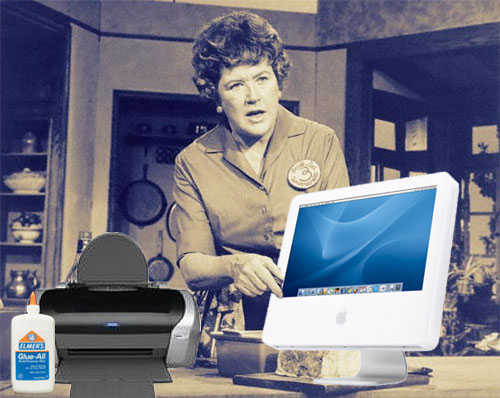
Throughout art school I constantly saw students, armed will little more than an iBook, desktop printer and a can of spray adhesive, churn out incredible projects. There should really be a TV show that demonstrates creative projects that home users can do using a computer and other common gadgets. It would be a kind of techy version of Martha Stewart Living, or Good Eats with Alton Brown. With the right host it could be beloved by Midwestern scrap-book moms and hipsters alike.
Creative Tech Projects TV Show
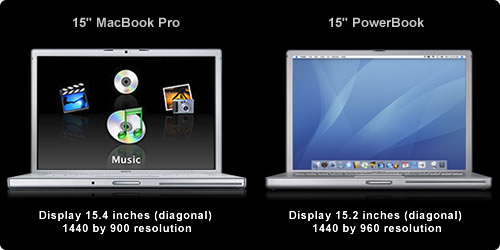
I'll be the first to admit that I probably focus on screen resolution a smidge more than the average computer user. So I'm incredibly disappointed that after finally adopting a 15.4" display on the 15" MacBook Pro, Apple is not offering different resolution options. What's most surprising about this move is that the current 15" MacBook Pro has a lower resolution than 15" PowerBook. Apple should really take better advantage of the 15.4" screen size and offer resolution options on the MacBook Pro.
Display Resolution Options on MacBook Pro

I've often wondered how much it costs to send an e-mail. Of course it's not so easy to measure, sure given a specific company or institution you can add up annual equipment costs and salaries, and divide that by the number of e-mails sent in a year and get a rough estimate. But at what point does energy and rent factor in to the equation? If you live in a major city such as New York, square footage isn't cheap. I've often thought that some enterprising company could offer huge cost savings on hosted e-mail by locating e-mail servers in a remote area and powering the server farm with wind turbines. Now that Google is slowly venturing into hosted e-mail, there's finally a pretty good candidate to try something like this.
Wind Powered Google Server Farm

Recently many companies have started making compact, user friendly photo printers which make it easy to print photos from a digital camera, or memory card. However, printing photos is only one part of the transition to digital photograph. Many families still have shoeboxes full of old photos, which if they haven’t taken themselves may have been handed down by grandparents or relatives. So the next need among consumers will be digitizing existing photographs, preferably as quickly and easily as they are used to printing the pictures shot yesterday on a digital camera.
Compact Photo Printers with Scanners

Just in case you two haven't met, Bose meet Roku, Roku meet Bose. Roku, in addition to making their own sweet network music players, also licenses their "Wifi Media Module" to OEMs. Bose should seriously consider using this technology in a "Bose WaveRadio Wifi". Particularly since the iPod Hi-fi from Apple has been a big let down.
Bose should partner with Roku
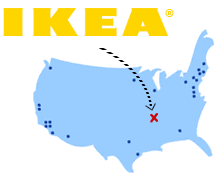
The midwest is already an incredibly underserved region for IKEA with only five stores (two outside of Chicago, two in Texas, and one in Minnesota). St. Louis is the perfect location for a new IKEA, to see why keep reading.
Build an IKEA in St. Louis
Subscription Model for iTunes Video Store
More Sketch Comedy on iTunes
Browse by Album Art in iTunes
Transfer iTunes Purchased Music from iPod
iTunes Lossless Downloads
iTunes Needs Tags not Genres
iTunes Week Recap
As much as the iTunes “Multi-Pass” and “Season Pass” for videos are great new purchasing options, a true subscription model for videos may still be preferable. Sure purchasing 16 episodes of the Daily show for $10 instead of $32 is great, but who really wants to own every episode of a daily TV show (even if it is as awesome as the Daily Show)? iTunes should offer a monthly subscription plan for videos, similar to the other music stores’ subscription model for music.
Subscription Model for iTunes Video Store
Apple is definitely on to something with selling Saturday Night Live sketches on iTunes. They should quickly expand to selling sketches of other beloved and short lived sketch comedy, such as The Ben Stiller Show, Kids in the Hall, Mr. Show, and, of course, The State. iTunes and the iPod could be the best thing to happen to sketch comedy since Lorne Michales.
More Sketch Comedy on iTunes
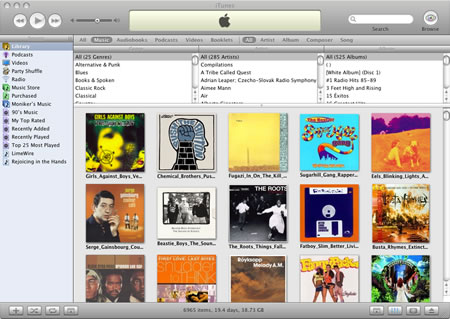
Album artwork has been largely peripheral to the experience of using iTunes, and it's time for this to change. Simply being able to browse artists and albums by CD covers would begin to restore what has long been a big part of enjoying music and artists, and is still largely lacking in digital music.
Browse by Album Art in iTunes
This is a simple one, iTunes purchased music should be able to be transferred from an iPod. If I accidentally delete a song file, or my hard drive crashes I should be able to restore any iTunes purchased music back to my computer from my iPod, that just seems fair.
Transfer iTunes Purchased Music from iPod
The current generation of iPods maxes at 60GB, and a 100GB iPod by year's end seems more than likely. With such high capacity hard drives, song file size is quickly becoming an afterthought to most consumers. After all, who's really counting after 10,000 songs. So I'm surprised that Apple still hasn't become the first mainstream digital music store to offer lossless downloads, especially given their recent product announcements and the growing popularity of Apple Lossless format.
iTunes Lossless Downloads
As much as I enjoy using iTunes, I'm perpetually frustrated by how to organize my music with it. To be fair, I have similar problems when I arrange CDs on a shelf or in one of those 200 CD nylon cases. My preference for browsing through music is looking at set of albums with some thematic connection. Currently the best way to do that in iTunes is by browsing by "genre." However, with so much new music crossing genres or existing squarely between two or three genres, this rarely works well (the whole notion of a music "genre" is a bit of an anachronism if you ask me). For instance you can have a genre for soundtracks and jazz and Latin, but that doesn't help at all when you come to the "Buena Vista Social Club", a soundtrack for a film about Cuban jazz. What would make much more sense is if multiple tags (or labels) could be applied to each song instead of just a single "genre."
iTunes Needs Tags not Genres

So in an attempt to get a whole bunch of ideas out at once about iTunes, I'm announcing this to be "iTunes Week" here at theyshouldothat. Check back all this week for new ideas all about iTunes.
iTunes Week!
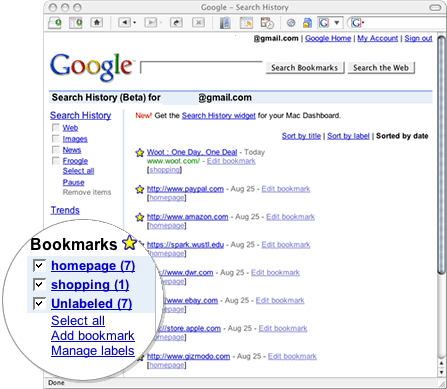
It seems that Google has expanded the Search History feature to include Bookmarks. I wish I knew exactly when this happened, but typical Google they rolled this out totally silently. Currently the way you add items to your Bookmarks is by "starring" items in your Search History. Then after you star a URL you can "label" it just like in GMail. Bookmarks can also be added from Google's Personalized Homepage, but if you do it this way you don't have the option of labeling it. However, you can't add a new bookmark directly from Google search results, which really seems like the most obvious way to add bookmarks, or just importing them from your web browser or from...
Integrate Google Bookmarks with Search
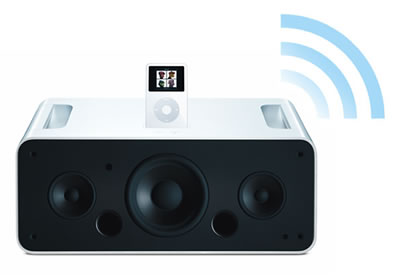
Like most people I was a bit disappointed by the iPop Hi-Fi. I still can't understand why Apple bothered to make a dockable speaker system, which is objectively just like all the other dockable speaker systems. It just doesn't seem worth their time. I'm also incredibly suprised and confused that they did not build "AirTunes" into the iPod Hi-Fi. Being able to stream music from iTunes to the iPod Hi-Fi is not only an obvious feature, but it would have clearly distinguished the iPod Hi-Fi from all the other high end dockable speaker systems.
iPod Hi-Fi with AirTunes
Categories
- About (5)
- Apple (44)
- Books (3)
- Cars (9)
- Consumer Tech (39)
- Dell (4)
- Digital Photography (4)
- Emerging Ideas (53)
- Energy (11)
- Film (3)
- Follow-up (8)
- Google (11)
- Gradual Improvements (40)
- Home Audio (8)
- Ideawatch (4)
- Microsoft (15)
- Missed Opportunities (8)
- Mods (3)
- Music (5)
- Printers (4)
- Shopping (13)
- Software (2)
- St. Louis (2)
- TV (2)
- They Did It (5)
- Touchscreen (19)
- UI (2)
- Zune (9)
- iPod (12)
- iTunes (14)
Archives
- All Archives
- September 2009
- July 2009
- May 2009
- April 2009
- February 2009
- October 2008
- September 2008
- May 2008
- April 2008
- March 2008
- February 2008
- January 2008
- December 2007
- November 2007
- October 2007
- September 2007
- August 2007
- July 2007
- June 2007
- May 2007
- April 2007
- March 2007
- February 2007
- January 2007
- December 2006
- November 2006
- October 2006
- September 2006
- August 2006
- July 2006
- June 2006
- May 2006
- April 2006
- March 2006
Movable Type 3.2
